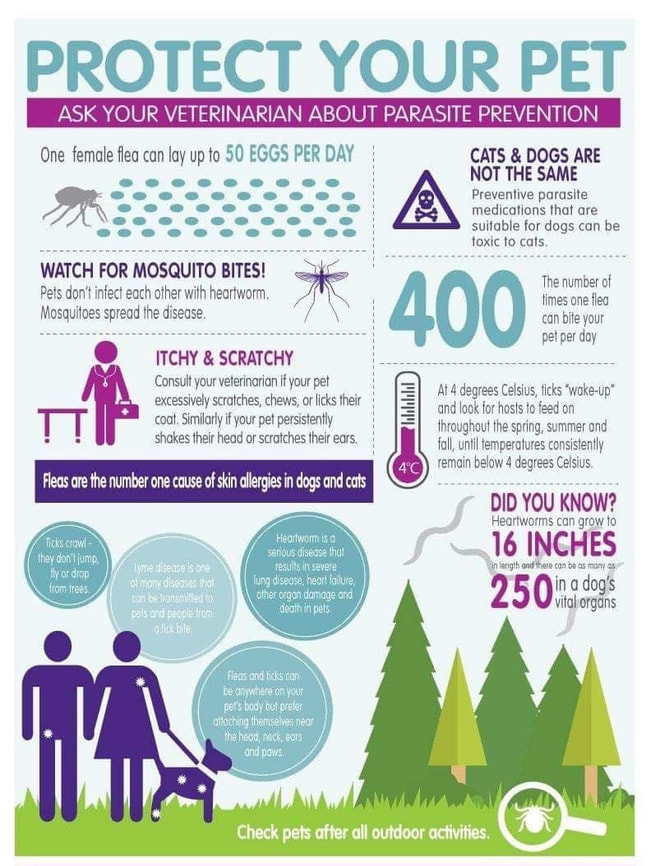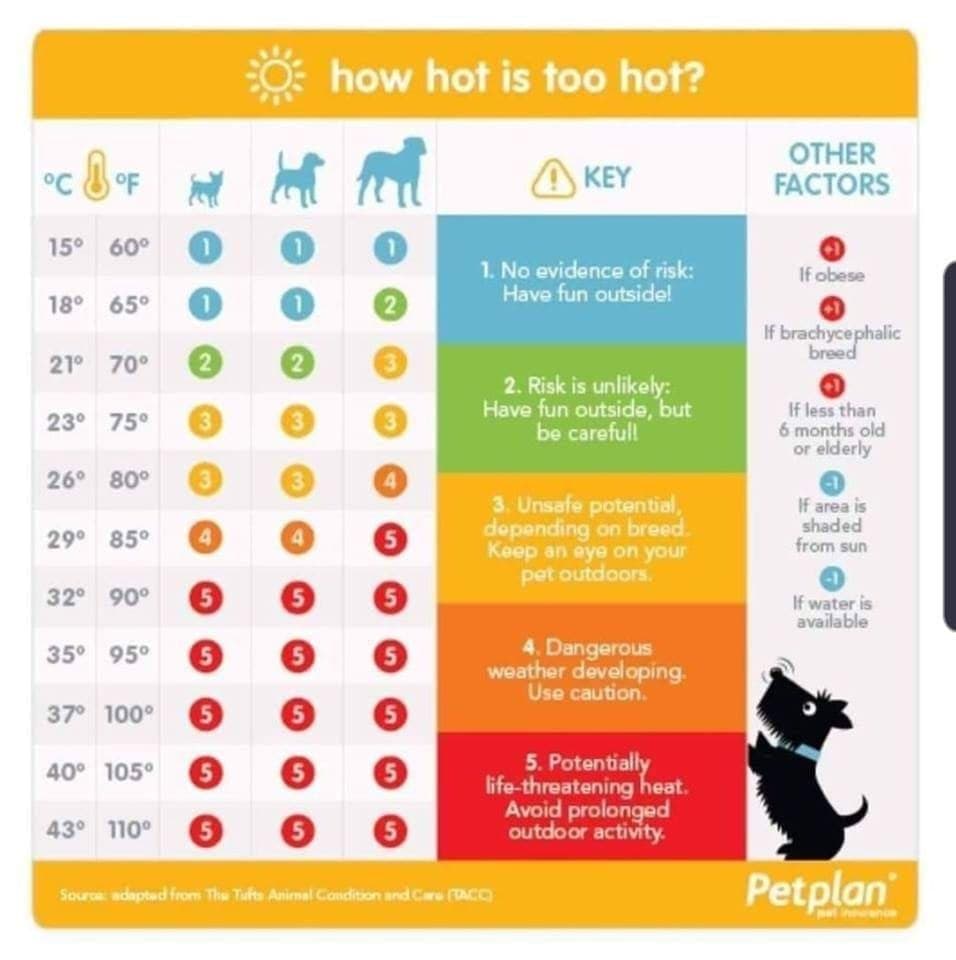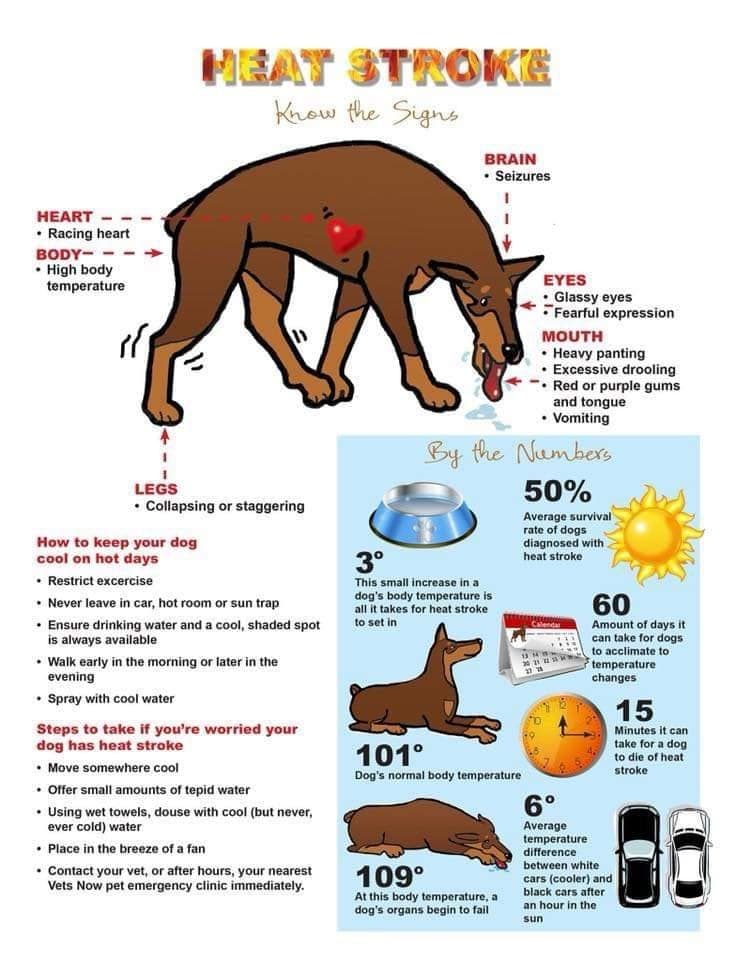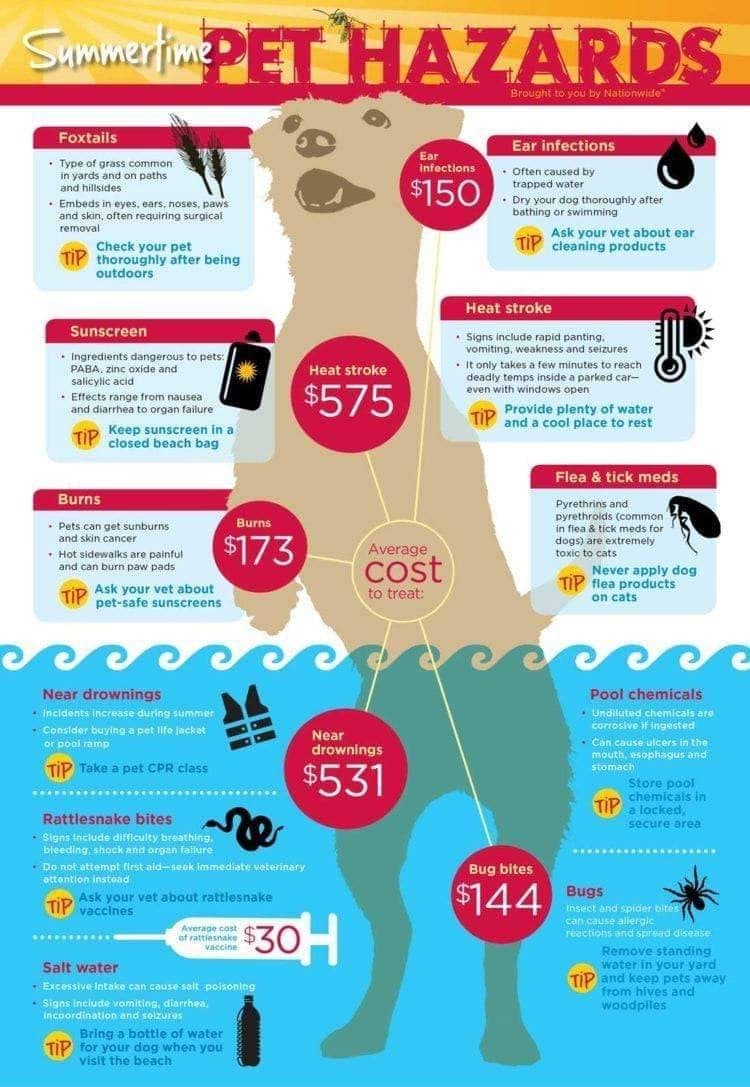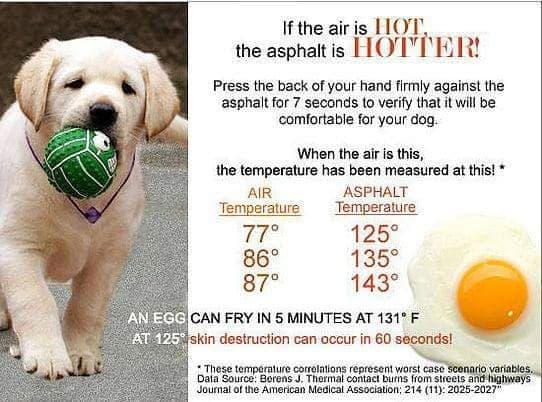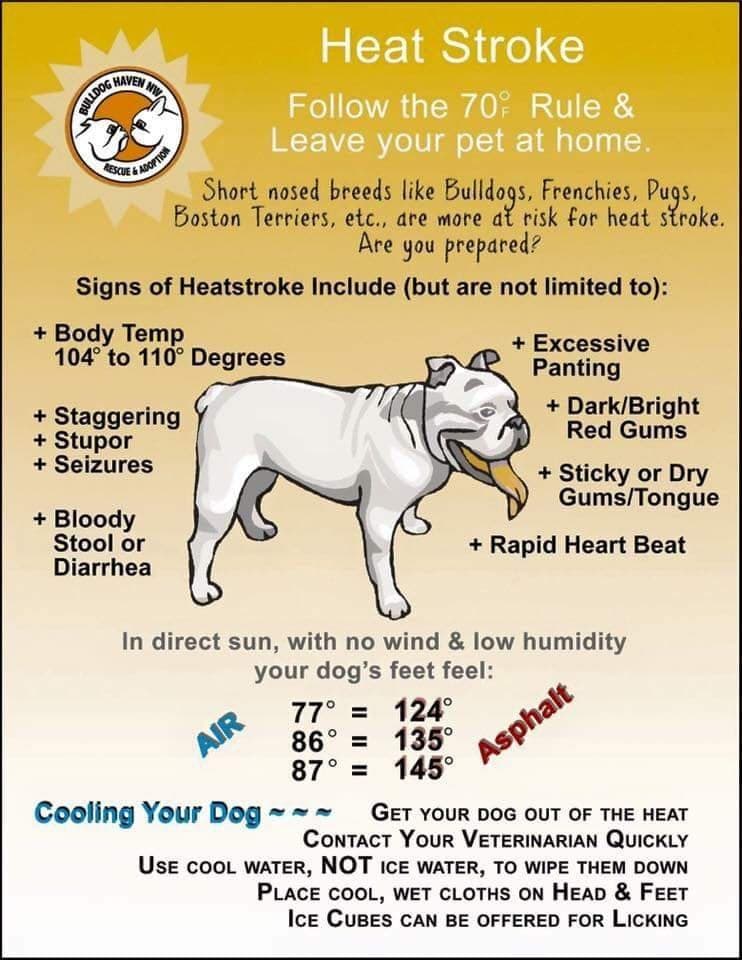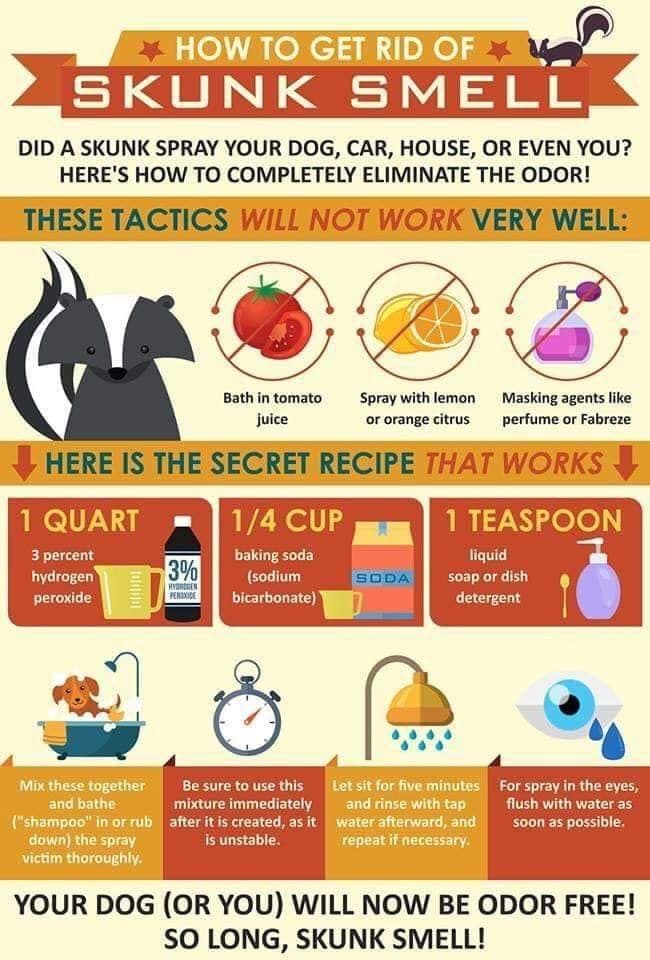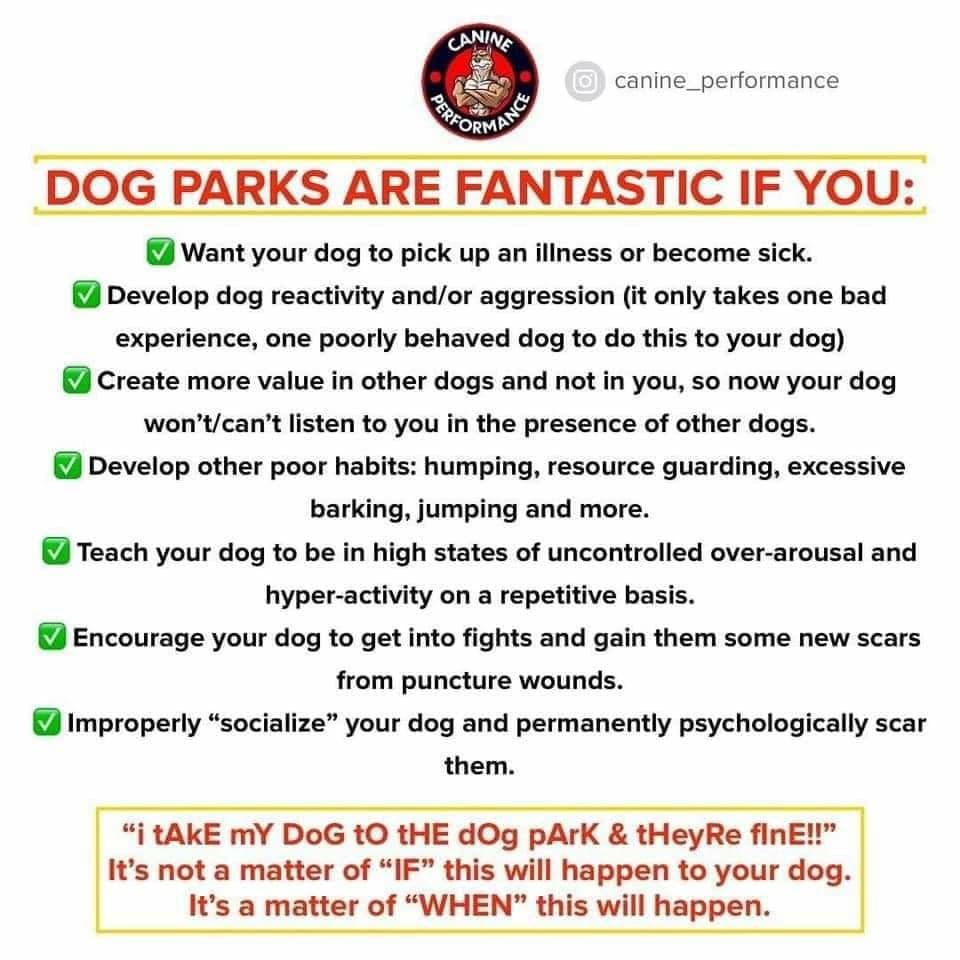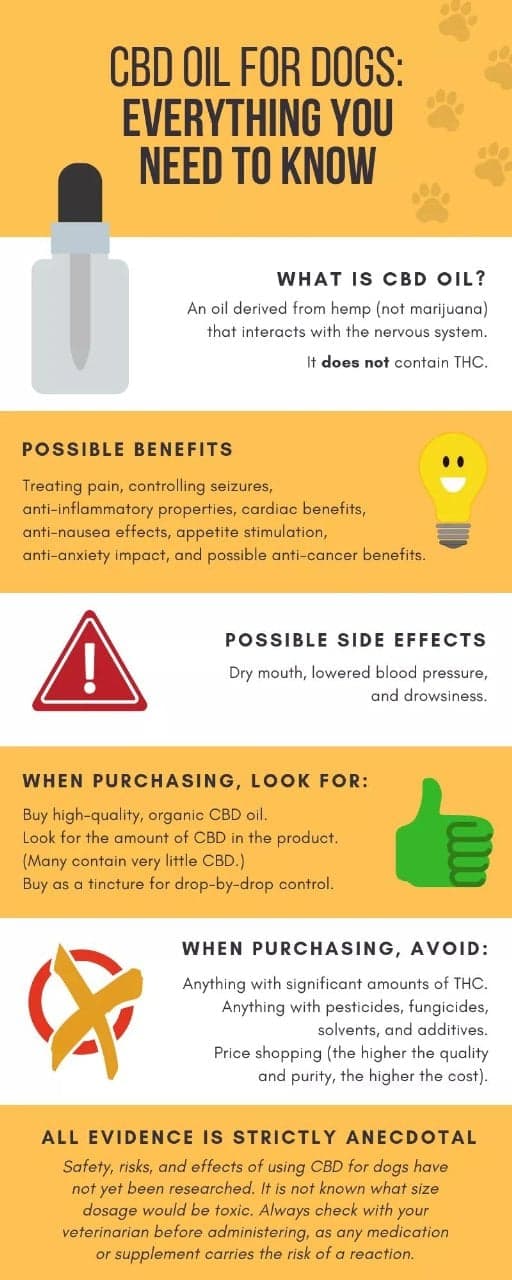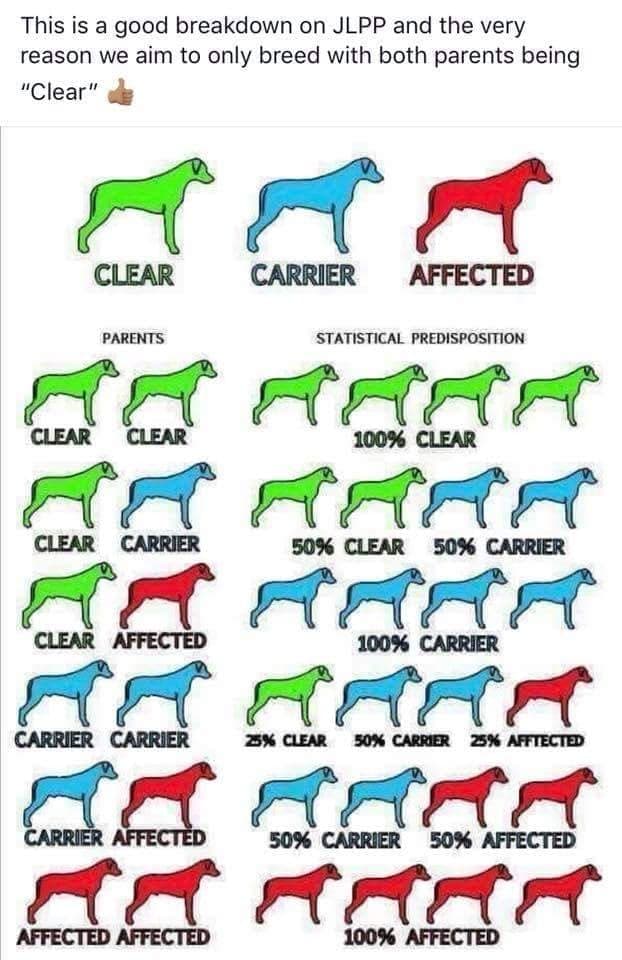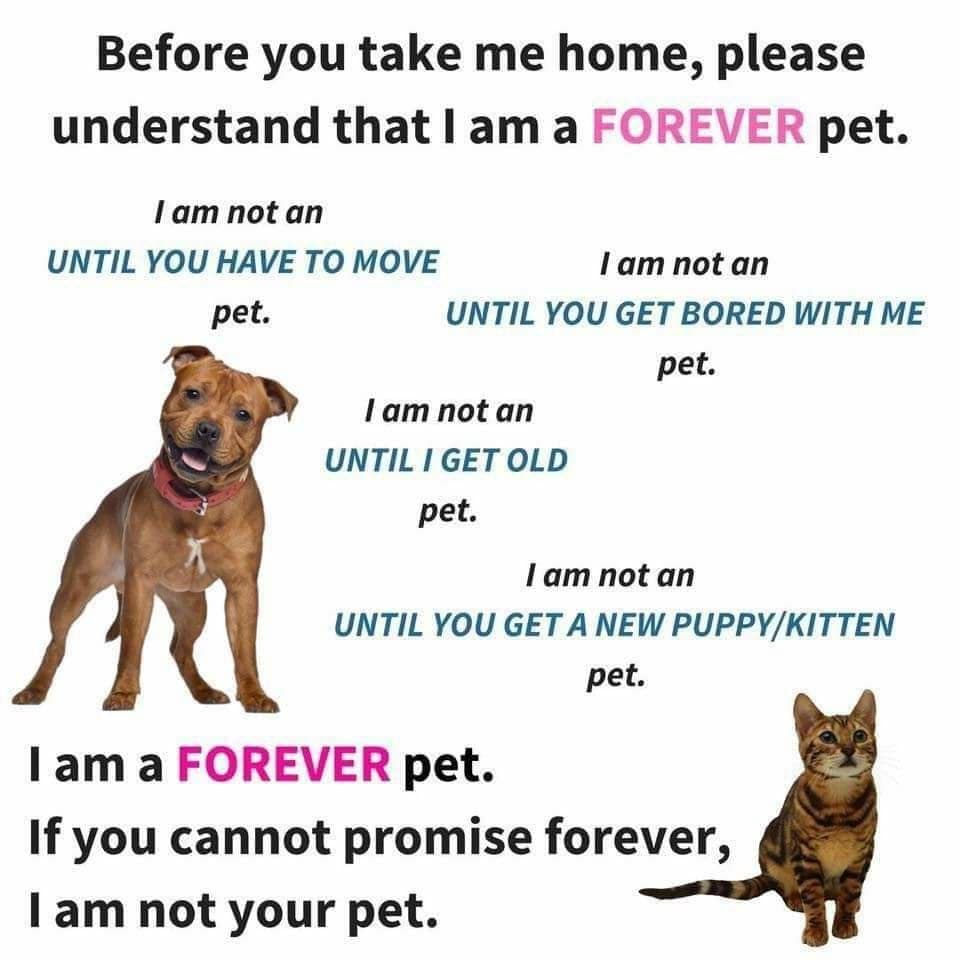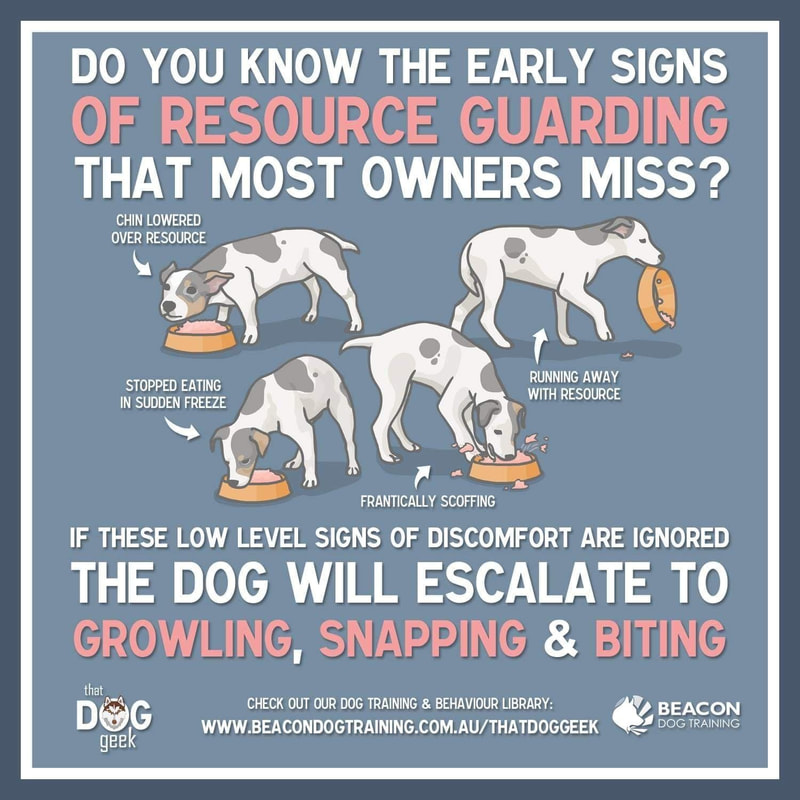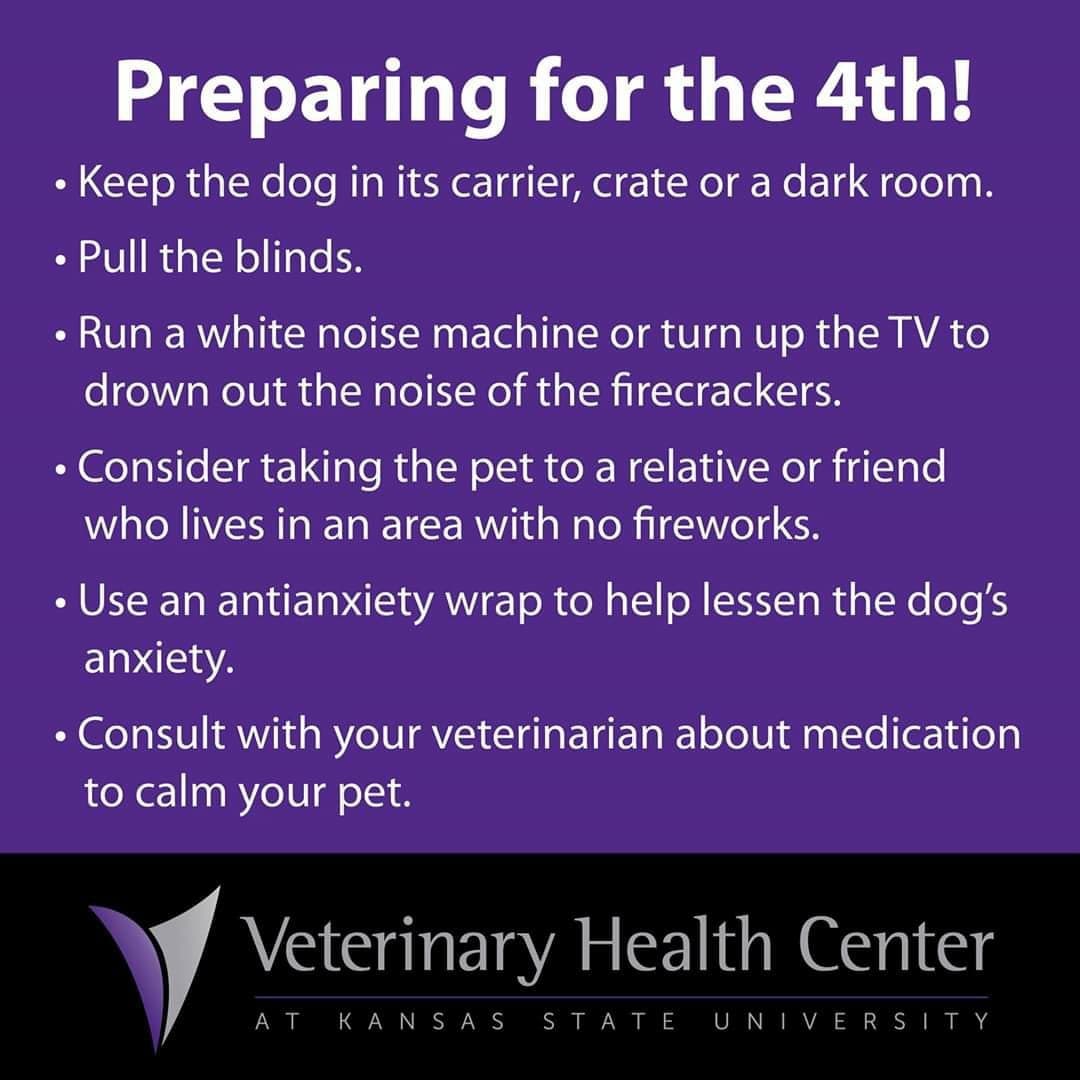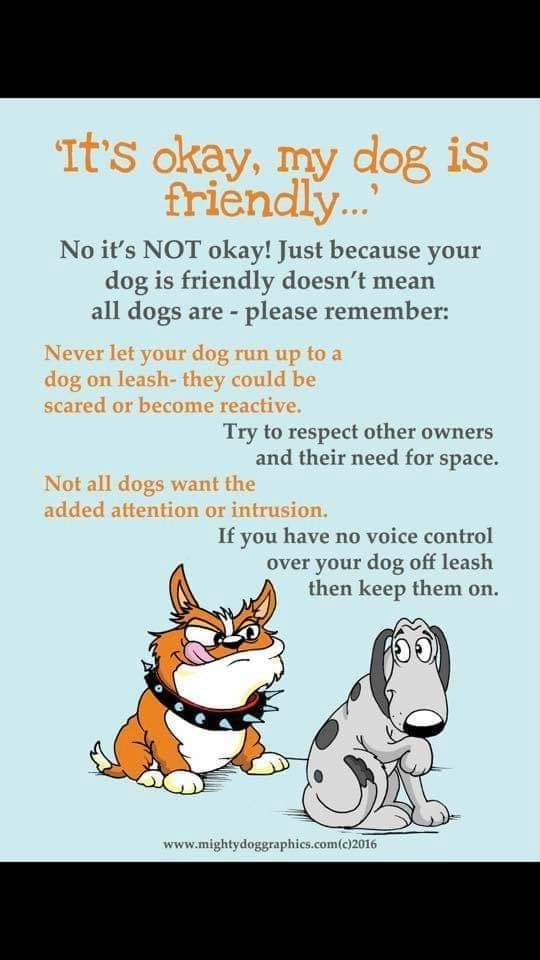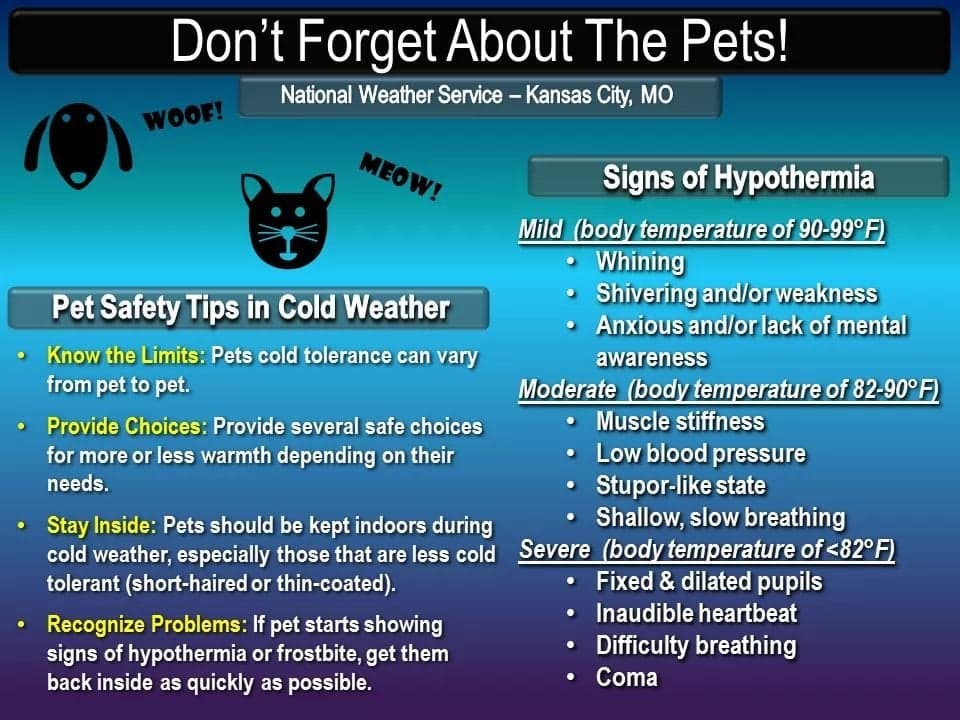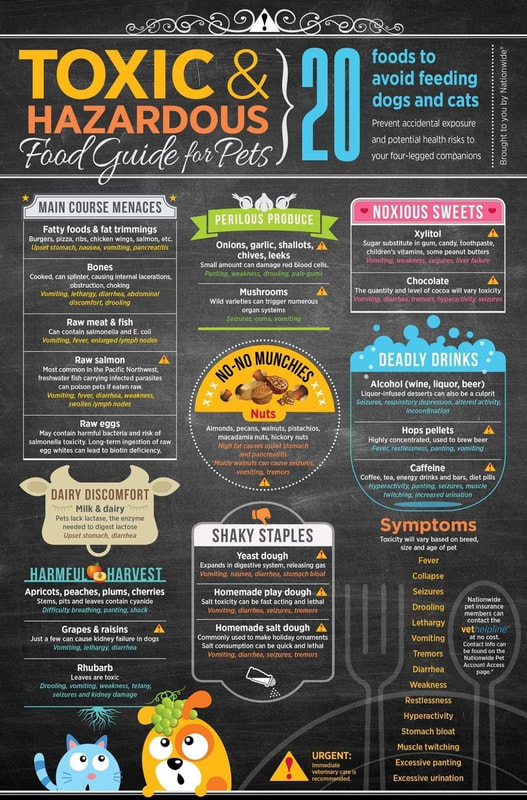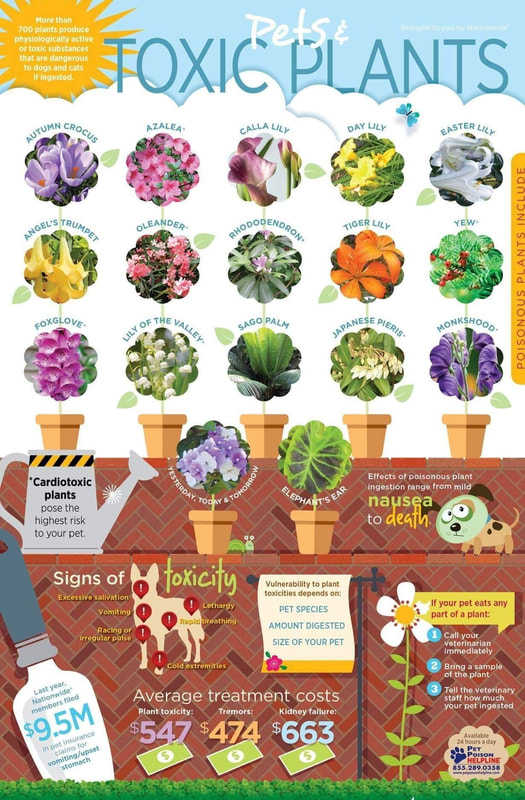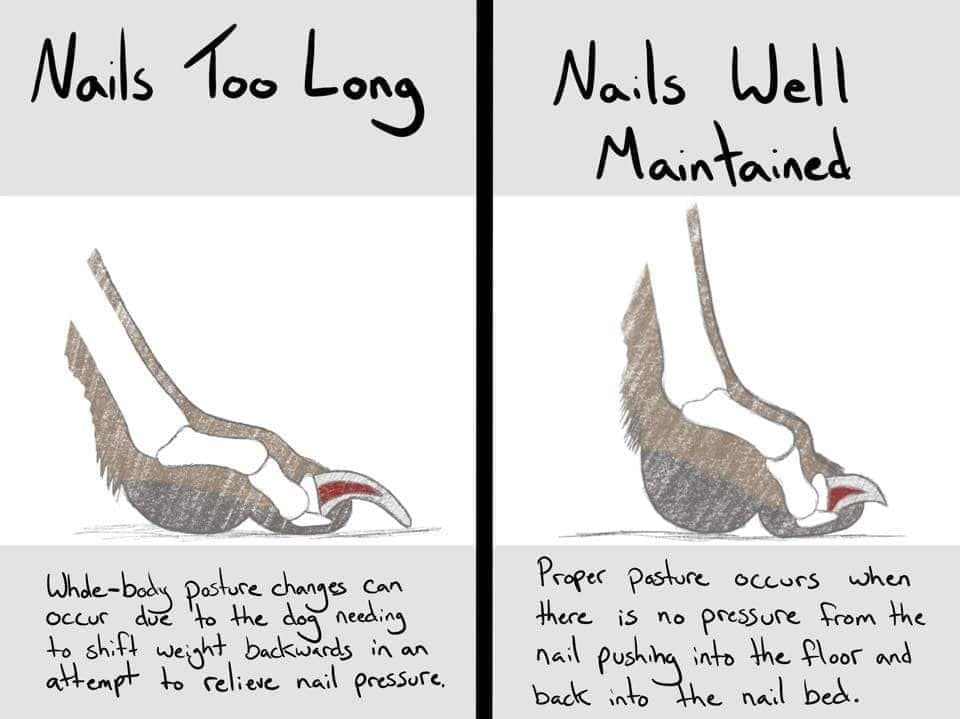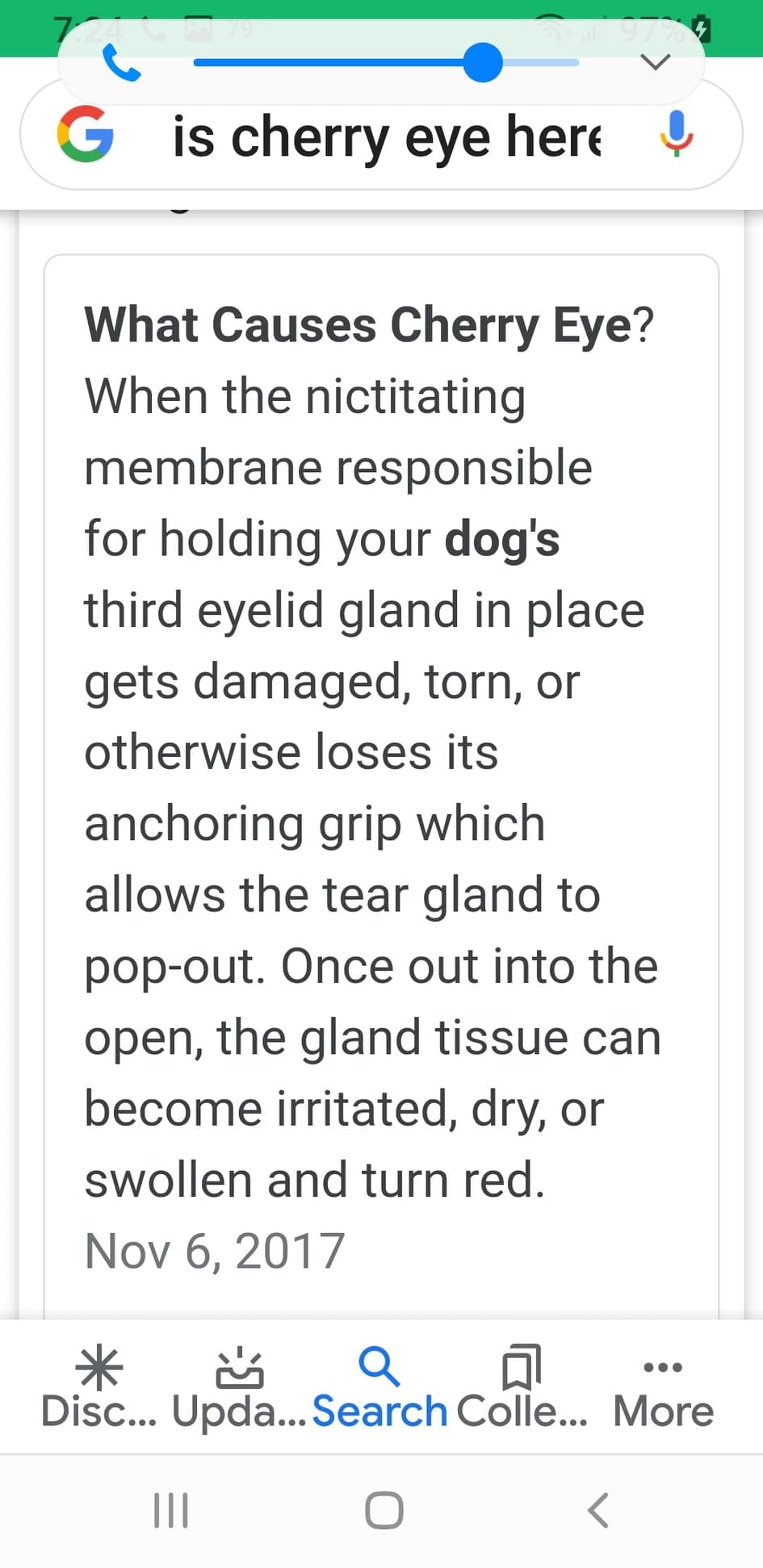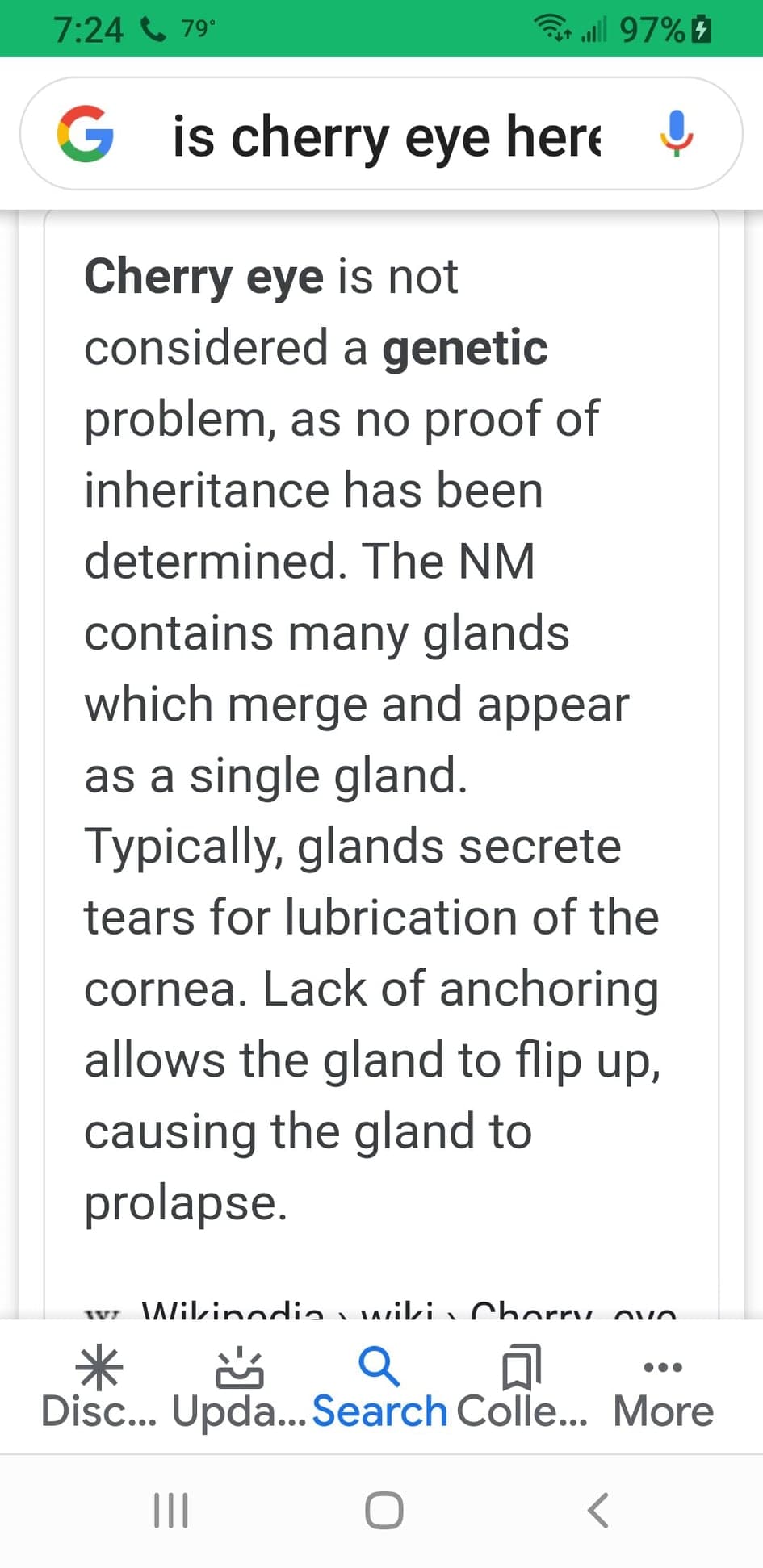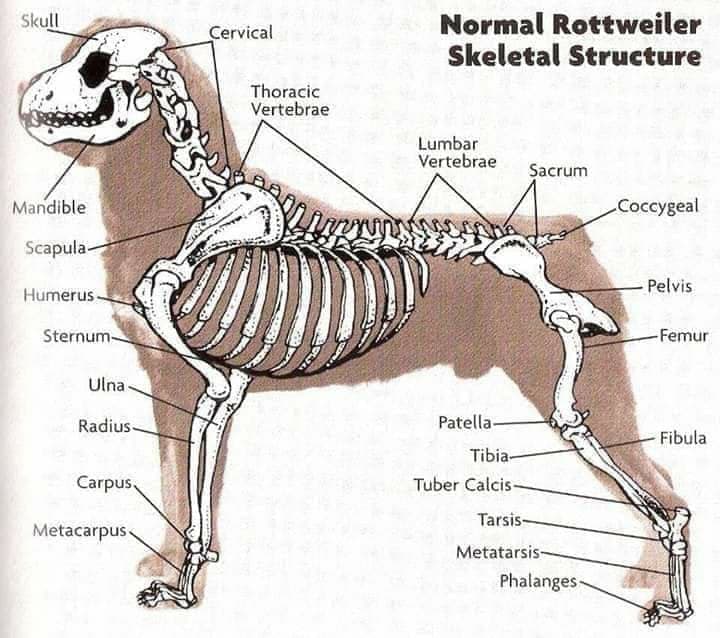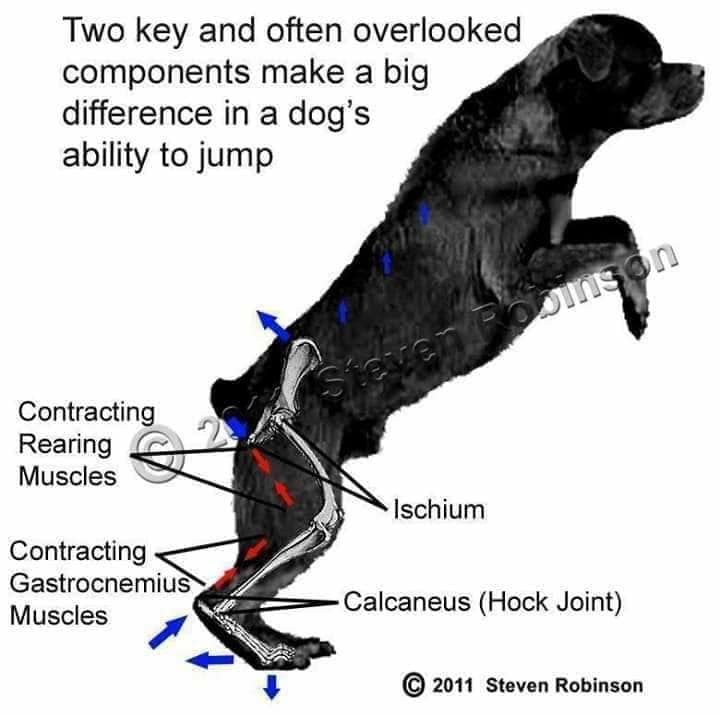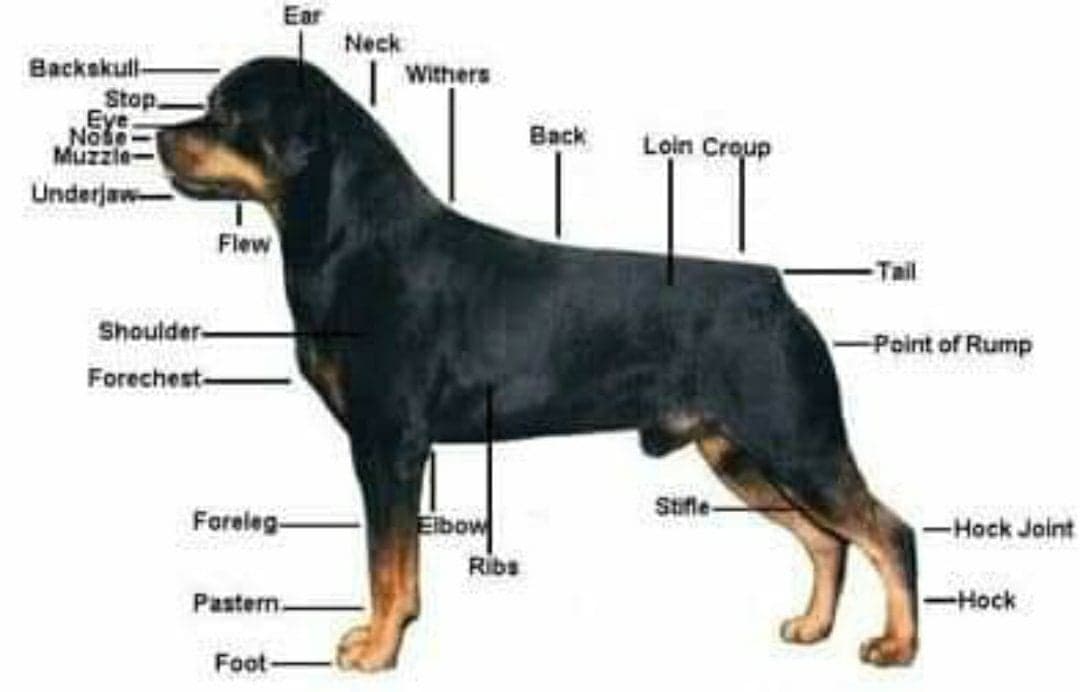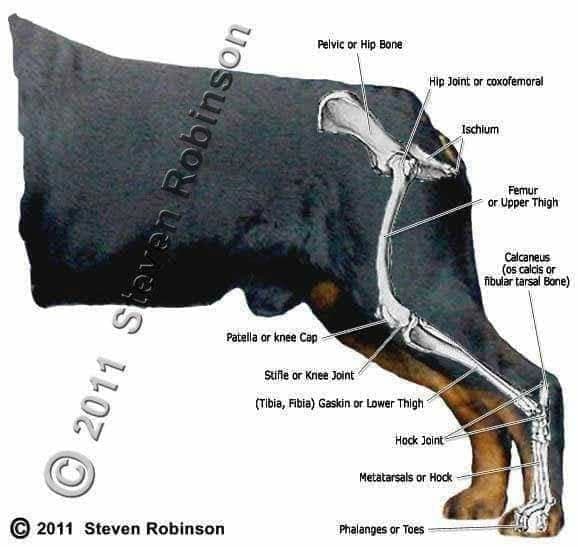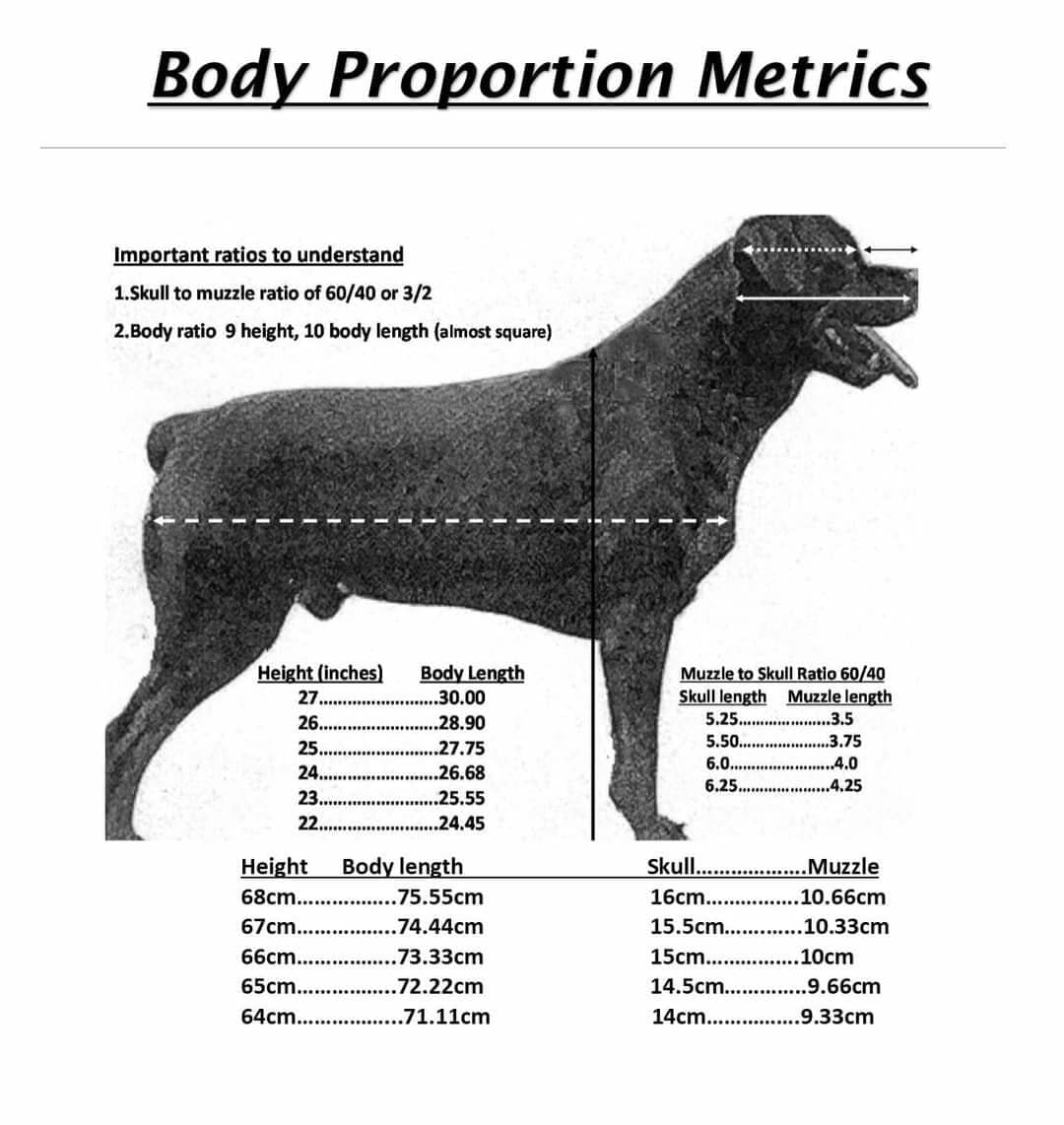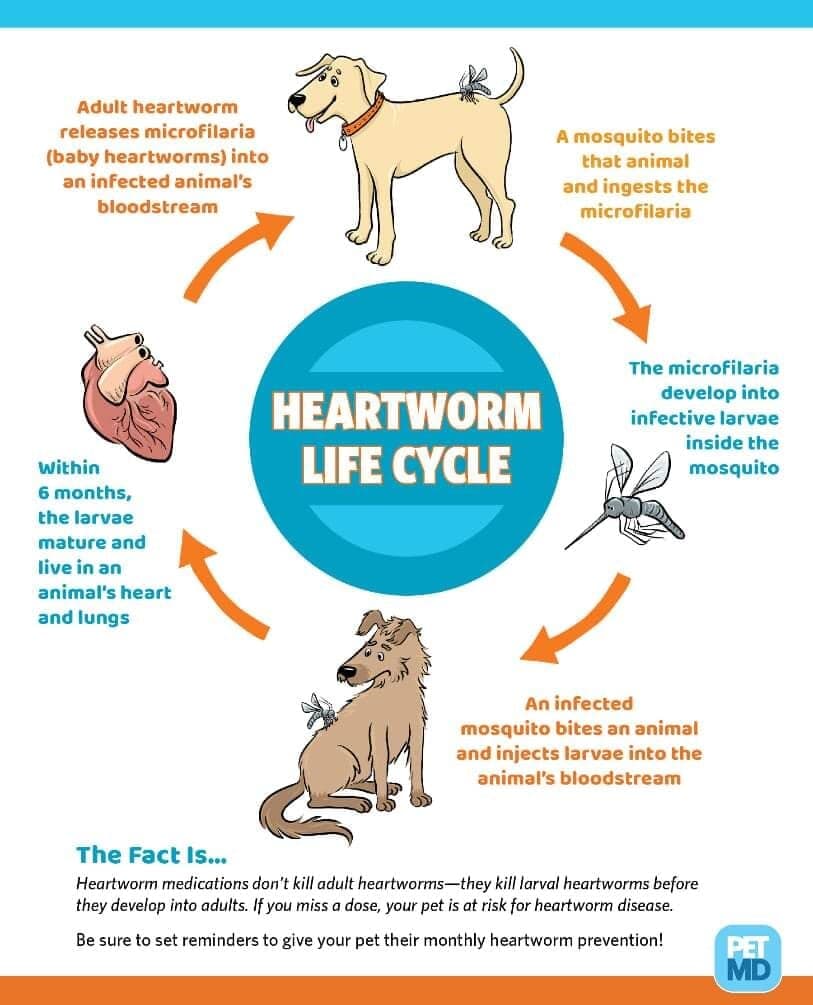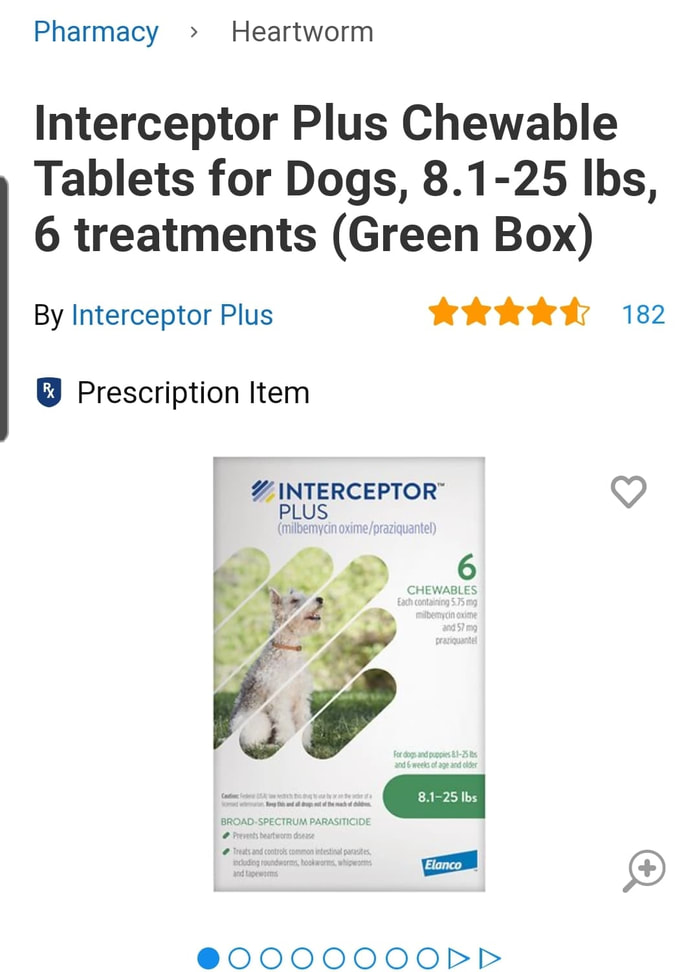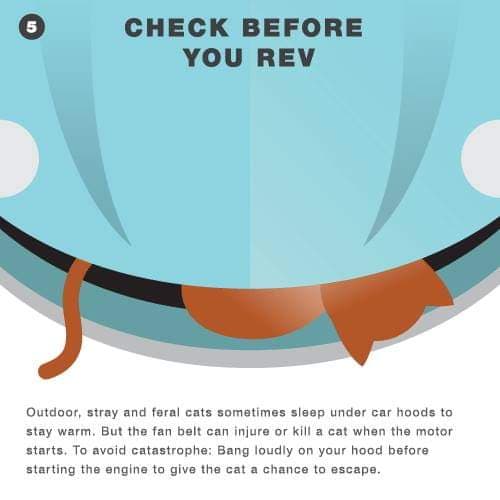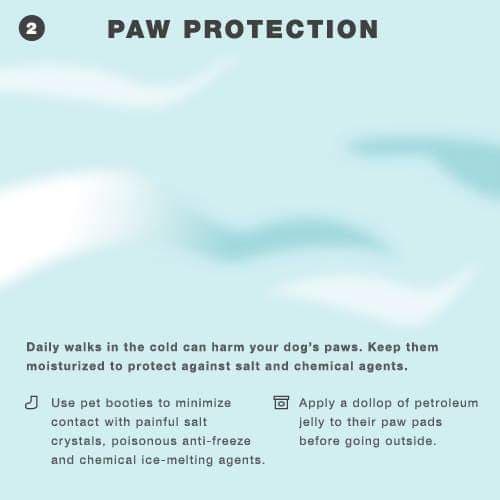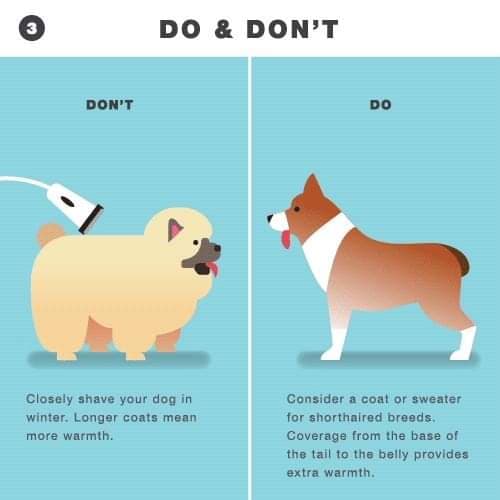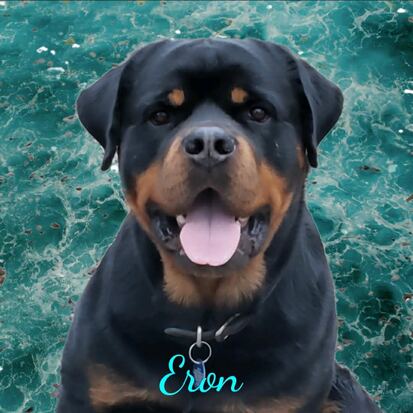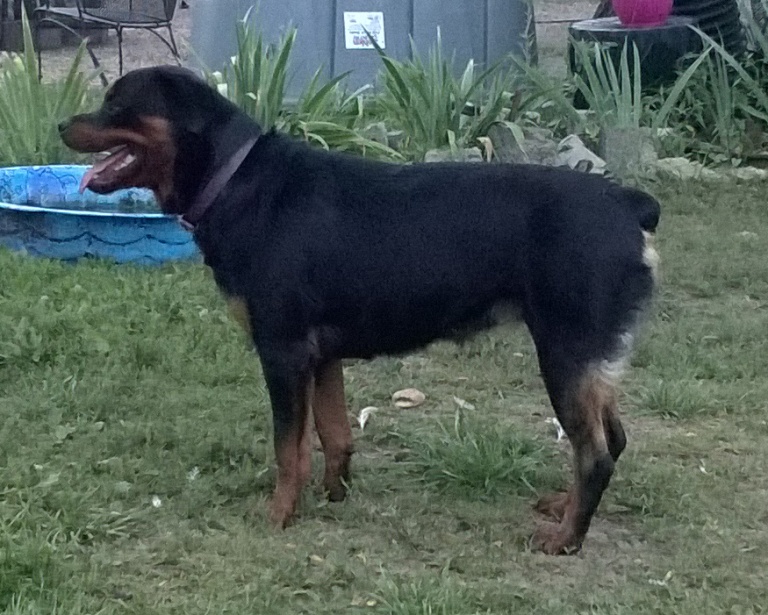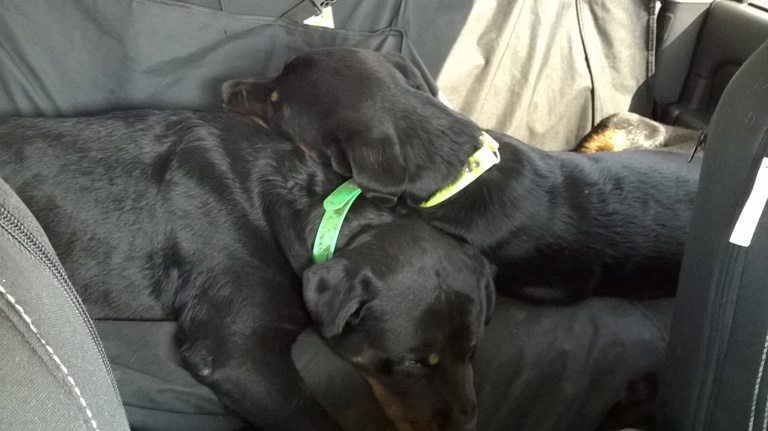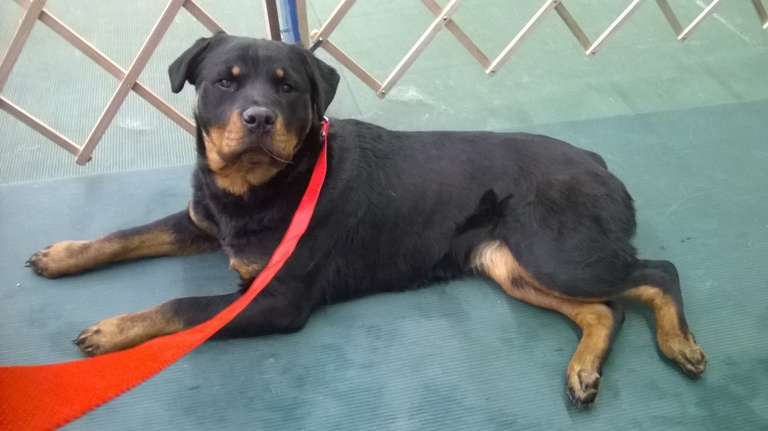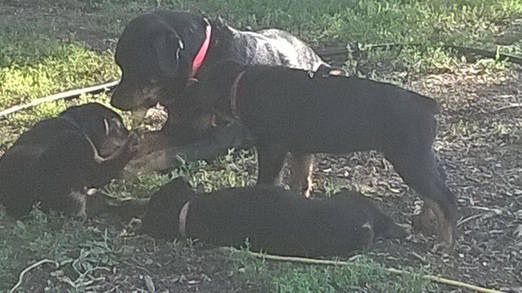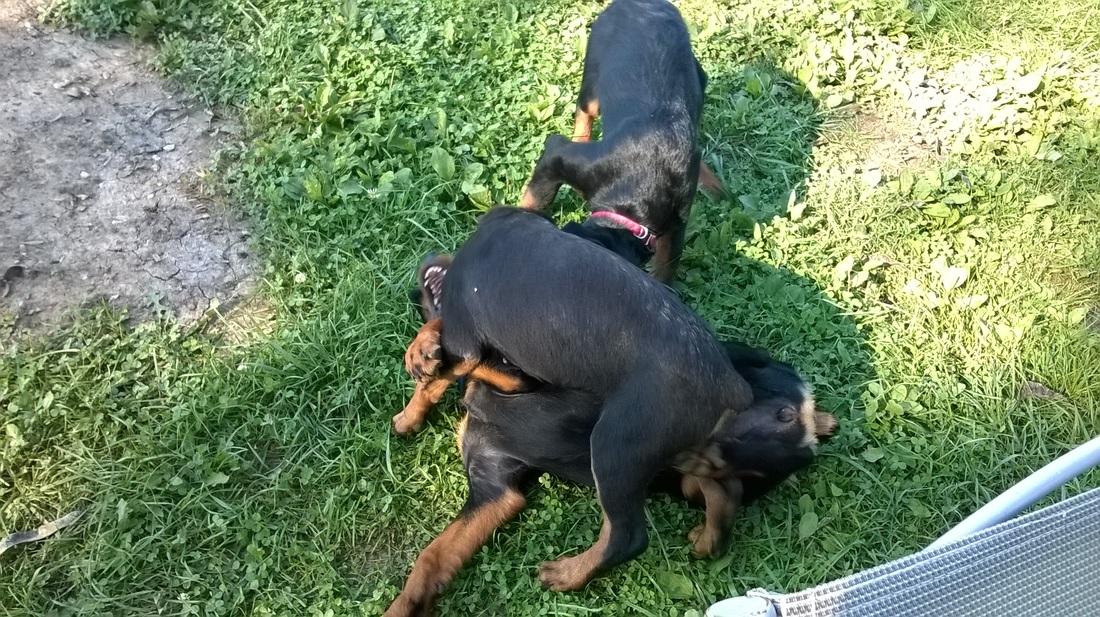Here is some Rottweiler Information
Heartworm Cycle & Treatment
Some Do's & Don'ts in cold weather
Should I Get a Pet?
What to Know Before Getting a Dog or Cat
So you're thinking of getting a pet dog or cat to add to your home. At this point, we don't need to tell you about all the fun, snuggles, games of fetch and of course the love that a furry friend will bring. But before you bring your new pet home, it's important to make sure that you're up for the "tough stuff" that comes with pet ownership too. Housetraining, vet bills, food costs and time. Do You Have the Time? You may be working or doing school from home right now and thinking a four-legged friend would make a great addition to your home office. But you need to also look down the road. Will you still be working from home two months or even two years from now? If going back to the office is likely, then make sure you have a plan in place for when that time comes. It isn't fair to a new puppy or kitten to be left alone in your home all day.
Getting a new pet is a commitment that typically lasts for many years, so make sure you have a long term plan. According to PetMd.com the average lifespan of a dog is six to 14 years, depending on the breed. And cats typically live anywhere between 10 to 15 years, depending on how much time they spend outdoors. Is Your Budget Ready? Pets are expensive. Depending on the size, type of food and the health of your animal, owning a pet can take a sizeable bite into your wallet. According to Petfinder.com, the average cost of owning a dog is between $300 and $2,000 per year, with the first year of ownership typically being the most expensive. And cats are about the same, averaging between $300 to nearly $2,000 per year. Those numbers consider vet visits, food, toys, treats, flea and tick protection, a bed, travel crates and more.
What Kind of Pet Should You Get?
Every cat and dog have their own personality and their own little quirks. And that can sometimes be hard to know about until you actually get home. However, there are general behavioral, space needs and shedding expectations depending on the breed, so it's a good idea to do your research before picking out your new pet. How much exercise will he need? Will she like living in an apartment? Does she shed? Is he allergy-friendly, family-friendly... or just overall friendly? GoodDog.com has a helpful breakdown of most dog breeds, by size, lifestyle, living arrangements, etc. Make sure the pet you choose will easily fit into your current lifestyle so you don't find yourself needing to buy a farm for your dog to run around. Housetraining Housetraining, also known as potty training, is a pretty big part of getting a new pet. Whether the animal is young or mature, midnight potty breaks and accidents on the living room floor are to be expected. So make sure you have lots of patience, Wee-Wee Pads and lots and lots of paper towels. For tips on how to housetrain a dog, check out the article: How to Housetrain Your Puppy. Is There a Veterinarian's Office Nearby? Just like people need regular checkups at the doctor, your pet will need regular vet visits. Vaccinations, spaying, neutering, injury care, dental cleanings, nail trims and general annual health checks are just a few of the reasons you may need a vet. Having a veterinarian nearby just makes it much easier when that time comes.
Along those same lines, if the breed you are considering needs regular furcuts, make sure to look up the reviews of nearby groomers, so you can keep your pooch looking sharp.
If your pet will be traveling to the vet or groomer's via a crate, make sure to get the right size travel crate. Here is a helpful video for those with dogs: How to Measure a Dog for a Crate. And since we know cats can sometimes be stubborn when it comes to getting into their crates, check out this article: Cat Carrier Tips: How to Take a Cat to the Vet.
Should You Have Your Pet Microchipped?
Microchips are a great way to help lost pets be reunited with their owners. But they aren't a GPS tracking system. The animal must first be found, then a microchip scanner can determine if the lost animal has a microchip. If a chip is found, the name of the registered owner can be looked up in a database; however, if you don't register the pet's microchip in your name, your name won't show up as the owner.
Whether you are getting a pet from a shelter, rescue or breeder, if it already has a microchip, great! Just make sure to ask about how to change the records to show you are the new owner. If the pet isn't microchipped, then that would be another great thing to discuss with your vet or if you want to try to do it yourself, check out the video: How to Microchip a Dog.
As stated in the start of this article, bringing a new pet into your home is one of the most life-changing and rewarding things you can do. But just make sure you're ready so you end up getting the best pet for you.
If you have more questions about your new pet's health or behavior, call a Revival Pet Care Pro at 800.786.4751.
-The Revival Education Team
Top 9 Dog Winter Myths
- “If it’s too cold for me, it’s too cold for my dog.”
If you do feel the need to bundle up, choose to cut walks and outdoor playtime short. Remember that all dogs still need exercise even if it is too cold out. Trying some recommended indoor games will keep dogs’ minds and bodies active!
- “Dogs can eat snow - it’s just frozen water!”
A nice blanket of snow also makes perfect cover for old food, trash, and animal waste that your pet can unearth. Remember to keep an eye on your dog and what he’s getting into outside, no matter the weather.
- “You don’t need to clean up after your dog in the winter.”
Biodegradation slows down in the winter months, so waste that is not scooped will remain until the spring. Until then, bacteria are leaching into the groundwater in your yard with each snowfall and thaw. Rather than potentially spreading infection for months to come, cleaning up after your dog (even in the snow) is always the better option.
- “Dogs don’t get fleas and ticks in winter.”
- “Dogs’ paw pads protect them from the ice and cold.”
Fur around the feet and legs also accumulates snowballs that should not be licked off. Snowballs on the chest and legs of shorter dogs should be gently melted and dried after outdoor walks. If your dog licks the excess snow, she could ingest antifreeze, salt solutions, and chemicals used to keep the sidewalks clear and become ill.
- “Dog booties and jackets are just a fashion statement.”
Petite, short-haired, senior, and young dogs may all need an extra layer of insulation when adventuring in the winter. Sweaters and jackets will keep them warm from head to tail!
- “It’s okay to leave your dog in the car when it’s not summer.”
- “When a dog’s nose is dry, it means he’s sick!”
To be clear, a dry nose does sometimes mean that your dog is not feeling his best. Dehydration or exposure to windy, cold weather can dry up snouts. If you have concerns about your dog’s consistently dry nose, it is always best to call your veterinarian.
- “Putting dog beds near heaters will keep pups cozy.”
Pet beds or blankets curled up near heat sources also pose a fire risk. Keep your pets’ beds and rest areas away from fireplaces and space heaters, as well as away from drafty windows or entrances, to keep them safe and comfortable until springtime.
|
Quick Tips for Making Car Rides a Pleasure with Canines ~
1. Restrain him. Use a crate or a seat belt and harness for your dog when riding in the car. Not only could your dog get loose on the road during an accident, he or she can become a projectile and injure the driver and passengers in the event of an accident or even just a sudden stop.
2. Get him comfortable. If the only time your dog ever gets in the car is to go the veterinarian, he may start to view it as a bad thing. Make sure to take some fun trips to the park, pet supply store, or a fun training class! 3. Preventing Car Sickness: If your dog gets carsick, ask your vet about motion sick medications for dogs. It could make your trips together a lot more fun! 4. Barking in the Car: Dogs that bark in the car are often over stimulated by the other cars, motion, and any other sights they may see out the window. Try using a crate in the car and giving a food-stuffed toy to keep your dog busy while riding. 5. Fear of Car Rides: Try some counter-conditioning if your dog is afraid of car rides. Try feeding and giving treats to your dog near the car at first, then near the car while the doors are open, then with the bowl on the floor of the car and the dog standing outside, etc. Continue with this gradual progression until your dog associates the car with good things, like mealtime and treats! . |
|
Distraction Training
Getting Your Dog to Ignore the Chaos and Obey Your Commands
If your dog is unaccustomed to compliance in unpredictable, high-pressure situations, his training could fail him when it matters most-in speeding traffic, for instance.
Distractions should be very slight at the beginning of training and gradually increase in degree of challenge. As with training motivators, the nature of distractions should depend on the individual dog. In fact, even things you normally use as motivators or rewards, such as treats, can serve as distracters. But should the treat prove irresistible, it might be better to choose a less-challenging distracter at first.
Build distraction resistance one factor at a time in the early training stages; as your dog gets better at ignoring temptation, he'll be ready for multivariable distractions.
Here's an example:
Distractions should be very slight at the beginning of training and gradually increase in degree of challenge. As with training motivators, the nature of distractions should depend on the individual dog. In fact, even things you normally use as motivators or rewards, such as treats, can serve as distracters. But should the treat prove irresistible, it might be better to choose a less-challenging distracter at first.
Build distraction resistance one factor at a time in the early training stages; as your dog gets better at ignoring temptation, he'll be ready for multivariable distractions.
Here's an example:
- Plato is a mildly food-motivated dog with average-to-high toy drive. The external stimulus will be a flying tennis ball at close range (in the kitchen) for a short period of time.
- Owner holds Plato on a leash. She throws the ball and, as Plato follows the trajectory, commands Plato to sit. Plato ignores the command and goes off to investigate the toy.
- Owner calmly walks over, gently takes Plato by the collar, leads her back to the spot where she ignored the “sit” command, and firmly (but not roughly) re-sits the dog.
- Owner repeats same distraction with the ball. Plato goes off to investigate again. This time the owner is better prepared, with less slack on the leash so Plato can't flee the “sit” spot, despite her obvious intent to do so. Since the first correction wasn't effective, the owner gives a mild tug on the leash as she re-sits and praises the dog.
- If Plato had not responded to the tug, a gradual escalation would have been indicated. But first a question: Is the chosen distraction simply too stimulating for the dog?
- If the tennis ball was driving her wild, the owner could have tried placing the ball on the floor instead of throwing it. This could make the exercise easier for Plato to handle. One can always build up the degree of difficulty gradually.
- Next, her owner must try her in different locations to be sure she understands that “sit” means sit wherever a tennis ball may appear -- not just in the kitchen or house.
Breaking Up a Dog Fight
What to Do and Avoid When Stopping a Dog FightDon’t become a victim in a dog fight. Keep in mind that aggressive dogs will attack anything in their fight zone during a confrontation.
Let’s first focus on the wrong ways to stop a dog fight.
Never reach in with your hands to separate two fighting dogs. The intense, violent nature of the fight may cause even your own dog not to recognize your hand or arm as separate from the rival dog. Animals may attack anything in the fight zone, and serious bites can result.
Also, never grab the dog by the tail and attempt to pull him away from the fight. The dog is maximally stimulated and might quickly wheel around and bite your hand.
So, what can you do? Trainers, veterinarians, dog groomers, and veterinary technicians offer a wide variety of answers. Here’s a few:
Exercise some common sense. Use foresight before placing your dog in stressful situations that may lead to a fight. If your dog is aggressive or a chronic fighter, don’t let him off-leash when he’s with other dogs. Obedience and socialization classes can help turn a fighter into a better citizen and a more enjoyable companion.
Let’s first focus on the wrong ways to stop a dog fight.
Never reach in with your hands to separate two fighting dogs. The intense, violent nature of the fight may cause even your own dog not to recognize your hand or arm as separate from the rival dog. Animals may attack anything in the fight zone, and serious bites can result.
Also, never grab the dog by the tail and attempt to pull him away from the fight. The dog is maximally stimulated and might quickly wheel around and bite your hand.
So, what can you do? Trainers, veterinarians, dog groomers, and veterinary technicians offer a wide variety of answers. Here’s a few:
- Step on the combatant’s feet. This distracts the dog enough for him to stop fighting.
- Place a large push broom against the chest of the fighter and shove him away from the other dog.
- Blow loud, shrill blasts from a whistle, such as a police whistle, right above the fight to distract the dogs.
- Throw water on them.
Exercise some common sense. Use foresight before placing your dog in stressful situations that may lead to a fight. If your dog is aggressive or a chronic fighter, don’t let him off-leash when he’s with other dogs. Obedience and socialization classes can help turn a fighter into a better citizen and a more enjoyable companion.
Dog Park Courtesy
Common Courtesy is Common Sense at Dog Parks
If you’re an urban or suburban dog owner, you’re likely familiar with the local dog park. It’s a canine oasis, where your leash-less pet is free to sniff, run and socialize with other dogs. Some parks post specific rules on signs, but dog park courtesy is mostly common sense.
If you’re an urban or suburban dog owner, you’re likely familiar with the local dog park. It’s a canine oasis, where your leash-less pet is free to sniff, run and socialize with other dogs. Some parks post specific rules on signs, but dog park courtesy is mostly common sense.
- Should your pet show signs of illness or a contagious disease, don’t bring him/her to the park.
- Don’t bring a puppy less than 4 months old or a female dog in heat.
- Keep an eye on your dog! Don’t let your dog be aggressive with another dog.
- Obviously, you should pick up after your dog.
- Don’t bring food for yourself or your dog.
- Bring a portable water bowl for your dog – water bowls at dog parks carry the risk of communicable illnesses.
- Keep your small dog in the designated small-dog section of the park – even if he/she enjoys hanging out with the big dogs.
- Bring a ball, but be prepared to lose it.
- Don’t let your dog run in a pack. Intervene when play starts to get too rough.
How to Prevent Your Puppy from Chewing on Your Personal Belongings
Puppies have two sets of teeth that emerge within the first six months of life. Just like human babies, they often find chewing soothing. And even after teething, some dogs just like to chew. You can't expect your puppy to instinctively know what is okay for her to chew on and what is not. Instead, you will need to guide and shape her habits in more healthy ways. For instance, you can give your puppy high-quality dog toys made just for chewing. But, you may have to experiment before you find out which ones your puppy likes. Look for toys that are hard (but not too hard) and do not have small bits that can be chewed off and swallowed. Never give your puppy old shoes and socks to chew on, since both of these items can become choking hazards. And if you have young children, don’t let your puppy play with their stuffed animals and don’t give her similar toys (even if they are from the pet store).
Puppy tip: Give your puppy toys that are as different as possible from your own possessions.
Getting a forbidden item from your puppy
If your puppy gets hold of something that you don’t want her to play with, intervene quickly. Don't yell; this will only scare her. Also, don't chase your puppy to try to retrieve the item. She may think you’re playing a game with her. Keep a ready supply of more interesting toys or treats. Offering your puppy a treat or one of these toys should cause her to drop your possession and choose the appropriate one. Be patient. Eventually, your puppy will learn that she must play with her own toys. Limiting access to your personal belongings is important. Pick up your belongings and keep closet doors closed.
Cupboards
Just like toddlers, dogs can learn to pry doors open. Consider installing child-proof latches on cupboard or closet doors. Even if your puppy doesn't get into the cupboard that contains the drain cleaner, there are still other hazards that can easily be avoided. For example, it doesn’t take a puppy very long to get into a bag of dog kibble or human food and consume enough of it to cause serious gastric problems.
Medications
Place medications in secure containers located in secure places (not on your bedside table). Puppies can chew through child-proof bottles! When you need to take medications, go to a room away from your puppy in case you spill some tablets on the floor (if you don’t know already, you'll quickly learn that puppies move fast).
The outside of your home
The outdoor part of your home can be dangerous for puppies, too. Read all instructions regarding pesticides and fertilizers and make sure you store these items—as well as antifreeze, paint thinners and solvents—out of your puppy’s reach. Slug bait is also deadly to dogs. Look for pet-friendly products, but don't forget that even 'natural' substances (such as compost) can be harmful to your puppy’s health. Don't let your puppy into the garage, workshop or shed where you store these items. If your yard is fenced in, make sure that there are no places where your dog can squeeze out.
Be very careful if you have a pool or a pond, since many dogs (especially puppies) have drowned after falling into water while the owner isn’t paying attention. Teaching a dog to swim to the shallow end (or even to climb a ladder) to get out of a pool can be a lifesaver. The entrances to your home can be the most dangerous places for your puppy. Many puppies are prone to slipping outside as soon as a door is opened, where they can easily scoot onto the road and get hit by a car. Make sure someone has control of your puppy before opening the door (or use gates to bar your puppy from the entrance).
4 Ways to Relieve Your Dog's Fear of Loud Noises
November 27, 2017 Lucy Sheppard Training & Development Do you have a dog that is terrified of loud noises such as thunder or fireworks? It can be devastating to watch as your dog tremble in fear, pant, and pace around every time a storm approaches or during Independence Day celebrations. The reasons why some dogs have a phobia of loud noises while others don't isn’t always clear. Yet, no matter what the cause, when your dog goes into this panic mode, you'll want to do just about anything to relieve her noise anxiety.
Is There Anything That Can Relieve My Dog's Noise Anxiety?
When your dog suffers from noise anxiety, the symptoms can range from mild, such as shaking and panting, to severe, including excessive pacing and even clawing through drywall. Unfortunately, there isn’t always a lot you can do about noise anxiety, and it can worsen as your dog gets older. Yet, some relief can be found in a few simple techniques.
Reward Calm Behavior
Often, dog owners unknowingly encourage anxious behavior by petting or trying to console a panicky dog. This only reassures their clingy behavior. Although you must not scold your dog for acting this way, you do not want to reward them either. When your dog begins to panic, playing fetch or offering them their favorite toy or their dry dog food may work as a distraction and calm them down. During times when there is not a storm or other loud noises, practice getting your dog to lie at your feet while praising the calm behavior. By learning this routine beforehand, you can command your dog to sit and relax next to you when a storm comes. Hopefully your dog will replace the fear of what is going on outside with something more comforting.
Find a Safe Place
When fireworks are going off or if there is a clap of thunder in the sky, notice where your dog goes and allow him access if possible. This could be a room, a crate, or a garage. If your dog can't see or hear what's going on outside, it may be just enough to calm him down. The best advice is to let your dog decide where to go, within reason of course. Also, you will want to make certain that your dog does not feel trapped as that will only make the anxiety worse.
Get Their Favorite Blanket Ready
When you anticipate some loud noises, wrap your dog's favorite blanket around them and have them lay down on the floor or couch next to you. Often dogs will retreat to a familiar comfort spot when anxious or panicky and having their favorite blanket there will certainly help. You can also try a snug-fitting shirt or wrap. There are several so called "pressure garments" on the market that are specifically designed to calm an anxious dog. Some dogs respond better to these kinds of garments than others, yet research suggests that they are certainly worth a try.
Your Vet May Know Best
If these methods aren't effective enough or your dog is in a horrible state of anxiety, you may want to ask your veterinarian for some behavior modification ideas or possibly anti-anxiety medication. While it should not be your first choice, medication may be the best option in extreme cases. Some dog owners only give their pet medication just prior to a thunderstorm or celebration involving fireworks. It is best to work with your vet to determine a proper treatment plan. No one knows for sure why some dogs are fearful of loud noises such as thunder and fireworks. Yet, we do know that if left untreated, the panic and anxiety gets worse with time. Fortunately, there are some things loving dog parents can do about it even in severe cases. So, the next time your dog goes into panic mode, try some of the simple techniques mentioned here.
Coccidia in Dogs
Coccidia are parasites that are often misunderstood. After the first exposure, Coccidian parasites are always present in the animal's intestines, and they're just waiting to take advantage of any digestive upset. It is rarely the initial cause of the diarrhea, but once diarrhea starts, the Coccidia will grow to large numbers to keep the diarrhea going. Coccidia are spread through feces, and younger animals are more susceptible to the disease because of their underdeveloped immune systems. Coccidia are a major issue for babies under eight weeks old and can even kill them.
Transmission of Coccidia Puppies are born with a sterile gut, and their mother seeds their gut with good bacteria during cleaning and care. However, puppies are often introduced to Coccidia through their mothers' infected feces. Coccidia can be spread from puppies to kittens and vice versa. The goal is to keep the puppy's exposure to a minimum number.
There are a variety of products you can use for both treatment and prevention, but the goal is to keep the numbers so low in the kennel that you rarely need to treat.
Treatment Marquis® is used to both prevent and treat Coccidia (Plumb). It works well and the once-a-week dose is easy to administer. Marquis (Ponazuril) will cause dry eye, so use caution in puppies under six weeks old - eye ulcers may develop in flat-nosed breeds. Marquis lasts seven days, and when it's given before shipment, it's very effective in stopping Coccidia from overwhelming the puppy as he adjusts to his new home. It is also okay to use late pregnancy.
Sulfa drugs have long been used to treat Coccidia, and they're also effective for prevention. Sulfadimethoxine Albon® works by preventing reproduction of the parasites. However, Albon® has seen some resistance from years of use. The best way to monitor resistance is to track the complaints post sale and switch your preventative before issues arise. You can switch back to Albon after six months or a year of using another preventative. Sulfa-Trimeth is related to Albon and has been used as an alternative with excellent efficacy.
Prevention Coccidia prevention needs to be started before birth and continued to the weaned babies. However, be cautious as many products are not safe in pregnant moms! You can never use sulfa between the 25th and 30th day of gestation as you increase cleft palate in dogs or cats. That is when the palate closes.
Another important part of prevention includes insect and rodent control, as mice and cockroaches can carry Coccidia. It is also important to practice strict sanitation. Because Coccidia spreads primarily through feces, all fecal matter should be removed regularly. This will help prevent food and water from becoming contaminated with feces.
Prevention of Coccidia in Dogs Decoquinate is an easy way to prevent Coccidia - simply add it to your puppy's food. Decoquinate works by preventing Coccidia from reproducing so they die of attrition (old age). It is safe for pregnant dogs! The mother should also be fed puppy food with decoquinate; feed the last two weeks of pregnancy. This decreases the number of Coccidia the mother can give to the puppies. When you wean the puppies onto decoquinate, it controls the issue until you move them to their new home.
Babies can go on Albon® or a generic after weaning for seven days. Can also use on moms after 35 days pregnant.
Another prevention option is to use Marquis® at 0.1 cc/1 lb every 14 days. Remember, dose every seven days for treatment for Coccidiosis and every 14 days for prevention.
Amprolium (Corid®) can also be used as Coccidia prevention. The flavor is terrible, so some people add raspberry or strawberry flavoring to help with the taste. For small breeds, do not mix it with water because they tend to get dehydrated from not drinking. The preferred way to use Amprolium is to drench the puppy daily - you know the dose is in and they will also drink adequate water.
Coccidia are parasites that are often misunderstood. After the first exposure, Coccidian parasites are always present in the animal's intestines, and they're just waiting to take advantage of any digestive upset. It is rarely the initial cause of the diarrhea, but once diarrhea starts, the Coccidia will grow to large numbers to keep the diarrhea going. Coccidia are spread through feces, and younger animals are more susceptible to the disease because of their underdeveloped immune systems. Coccidia are a major issue for babies under eight weeks old and can even kill them.
Transmission of Coccidia Puppies are born with a sterile gut, and their mother seeds their gut with good bacteria during cleaning and care. However, puppies are often introduced to Coccidia through their mothers' infected feces. Coccidia can be spread from puppies to kittens and vice versa. The goal is to keep the puppy's exposure to a minimum number.
There are a variety of products you can use for both treatment and prevention, but the goal is to keep the numbers so low in the kennel that you rarely need to treat.
Treatment Marquis® is used to both prevent and treat Coccidia (Plumb). It works well and the once-a-week dose is easy to administer. Marquis (Ponazuril) will cause dry eye, so use caution in puppies under six weeks old - eye ulcers may develop in flat-nosed breeds. Marquis lasts seven days, and when it's given before shipment, it's very effective in stopping Coccidia from overwhelming the puppy as he adjusts to his new home. It is also okay to use late pregnancy.
Sulfa drugs have long been used to treat Coccidia, and they're also effective for prevention. Sulfadimethoxine Albon® works by preventing reproduction of the parasites. However, Albon® has seen some resistance from years of use. The best way to monitor resistance is to track the complaints post sale and switch your preventative before issues arise. You can switch back to Albon after six months or a year of using another preventative. Sulfa-Trimeth is related to Albon and has been used as an alternative with excellent efficacy.
Prevention Coccidia prevention needs to be started before birth and continued to the weaned babies. However, be cautious as many products are not safe in pregnant moms! You can never use sulfa between the 25th and 30th day of gestation as you increase cleft palate in dogs or cats. That is when the palate closes.
Another important part of prevention includes insect and rodent control, as mice and cockroaches can carry Coccidia. It is also important to practice strict sanitation. Because Coccidia spreads primarily through feces, all fecal matter should be removed regularly. This will help prevent food and water from becoming contaminated with feces.
Prevention of Coccidia in Dogs Decoquinate is an easy way to prevent Coccidia - simply add it to your puppy's food. Decoquinate works by preventing Coccidia from reproducing so they die of attrition (old age). It is safe for pregnant dogs! The mother should also be fed puppy food with decoquinate; feed the last two weeks of pregnancy. This decreases the number of Coccidia the mother can give to the puppies. When you wean the puppies onto decoquinate, it controls the issue until you move them to their new home.
Babies can go on Albon® or a generic after weaning for seven days. Can also use on moms after 35 days pregnant.
Another prevention option is to use Marquis® at 0.1 cc/1 lb every 14 days. Remember, dose every seven days for treatment for Coccidiosis and every 14 days for prevention.
Amprolium (Corid®) can also be used as Coccidia prevention. The flavor is terrible, so some people add raspberry or strawberry flavoring to help with the taste. For small breeds, do not mix it with water because they tend to get dehydrated from not drinking. The preferred way to use Amprolium is to drench the puppy daily - you know the dose is in and they will also drink adequate water.
4 Main Causes of Newborn Puppy Illness and Death
There are four main causes of early neonatal puppy illness and death. Once the pups are breathing well, managing these four parameters can make the difference between life and death for your pups. The four are all intertwined, without managing one well, you will struggle to manage the other three. They will be discussed as the 4Hs for this reason.
Hypothermia in Newborn Puppies Hypothermia in puppies is low body temperature.
Hypothermic pups have a four-fold increase in risk of death. Since a puppy cannot regulate his body temperature well until he is three weeks old, use a rectal thermometer and weather station to monitor the temperature and humidity. Avoid feeding until the puppy has an appropriate rectal temperature for one hour. If a puppy has a low body temperature, increase surface temperature and avoid use of a heat lamp due to risk of dehydration. A good guide to different temperatures for newborn puppies is:
Room temperature = 75° F
Surface temperature = 90° to 95°F
Rectal temp 94°F to 96°F
for the first 24 hours Rectal temp 96°F to 98°F
for the first week
The PuppyWarmer® system incubator allows for more intensive care and precise warming of hypothermic pups.
Hypoglycemia in Puppies Hypoglycemia is low blood glucose or sugar.
Hypoglycemia in puppies is caused by lack of adequate nutrition and using too many calories for staying warm and moving around. Puppies with a glucose of less than 90 gm/dl have a four-fold increased risk of death. To manage hypoglycemia, use a glucometer and a foot pad stick to diagnose the low glucose. Start or increase calorie intake by tube or bottle feeding. Glucose can be given orally or by IV administration. Doc Roy's® Forti Cal can be given orally if injectable glucose or dextrose is not available.
Glucose of 90 mg/dl or higher at 24 to 48 hours of age= normal Hydration for Puppies Hydration is the fluid balance in the body. Dehydration is the lack of adequate fluids, usually taken in as milk during nursing. Monitor hydration by looking at urine color collected by stimulations on a dry white cotton ball or tissue. Hydration can be managed by increasing nursing, bottle feeding, tube feeding, or by injecting fluids subcutaneously (SQ).
Electrolytes such as Breeders' Edge® Puppy Lyte are useful for puppies showing signs of dehydration, or for puppies who are vomiting and/or having diarrhea. These are to be given orally.
Hypoxia in Newborn Puppies Hypoxia is oxygen deprivation or low blood oxygen. Hypoxia in newborn puppies can be managed by putting the puppy in an oxygen chamber. An oxygen tank or oxygen concentrator will improve oxygenation of the pup's blood. Room air is 20 percent oxygen, oxygen concentrators provide 95 percent oxygen and oxygen tanks provide 100 percent oxygen. By increasing the oxygen in the pup's environment with a face mask, blow-by, or in an oxygen chamber/incubator, you will improve the chances of the pup's survival until they are breathing strongly enough to survive on room air.
Our new PuppyWarmer® Oxygen Concentrator system, paired with the PuppyWarmer® incubator is the single best product on the market to manage hypoxia. Hypoxic puppies have blue to gray gums and are seen to be struggling to breathe.
Pulse oximeters are a medical device that can measure the oxygen in the blood of a puppy or adult dog by use of a clip on the toes or lip. They are widely used in human and veterinary medicine during anesthesia or in the case of respiratory distress. Pulse oximeters can also be used on newborn pups to assess their ability to move and use oxygen.
Dog Ears Need Care Too Regardless,
if your dog’s ears stand as tall as an evergreen tree or are a little droopy, they all need to be included in your dog’s grooming routine. Regularly cleaning your dog’s ears is crucial for their health and can help prevent different diseases, ear infections, and ear mites.
In the Pet Care Pro Show, I mentioned earlier they’ll be walking through our recommended routine, so check that out for helpful tips.
Don’t Forget Your Cat! Just like dogs, cat ears can also become infected or contract ear mites.
The routine we recommend can also help with your cat’s ears, but if you’re unsure or have questions, feel free to call into our Pet Care Pros. Identifying Ear Problems Identifying which issue your pet may have is pretty simple. If it looks like coffee grounds in your pet’s ears, it’s ear mites. Stinky ears or ears with a discharge, it may be a bacterial or yeast infection. After you figure out which problem your pet may have, you’ll then want to clean it.
Apply Vet Basics® General Ear Cleanser into the ear canal and massage the base of the ear for 20 to 30 seconds. Then clean out the ear with a cotton ball or tissue. You can repeat this as necessary. After you clean the ear, you can then begin to treat the problem. For ear mites, apply an ear miticide for three weeks. For bacterial or yeast infections, apply Vet Basics® ChlorConazole Ear Flush two times a day for two to three weeks. If the problem persists consult your veterinarian.
Panosteitis in Puppies: Growing Pains in DogsLast updated: January 27, 2021
Panosteitis, also known in short-hand as pano in puppies, is a relatively common and relatively minor cause of puppy lameness. The easiest way to understand panosteitis is to draw similarity to "growing pains" seen in teenage humans.Panosteitis Symptoms in DogsPanosteitis is most commonly seen as an acute lameness, primarily in large breed male dogs at the peak of their growth phase. One hallmark of panosteitis is "shifting-leg" lameness, meaning one time you look at him and you think he is limping on his left rear leg, and the next time it looks like his right front leg is the one bothering him. Canine panosteitis is usually considered a self-limiting disease, meaning by around one year of age, five years in German Shepherds, the puppies usually outgrow it.Causes of Canine PanosteitisAn underlying cause is thought to be feeding a protein-rich, high calorie food. Sometimes, just changing the puppy to a less "hot" diet, like an adult maintenance diet, will allow the disorder to resolve. There may also be a genetic influence, as more German Shepherds and Basset Hounds are most commonly affected, along with Labrador Retrievers, Golden Retrievers and Dobermans.Diagnosing Pano in DogsPanosteitis is diagnosed on physical examination, X-rays, breed, sex, age, eliminating other disorders as causes of puppy lameness, and response to treatment as well as noting and monitoring the shifting leg lameness. On physical examination, pain is usually elicited by putting pressure on the portion of the bone where the blood vessel enters the bone. This helps to distinguish panosteitis from other disorders that involve joint pain.
X-rays, particularly if taken shortly after symptoms develop, may not show typical changes. One of the most valuable uses of X-rays is to make certain there is no other reason for lameness, such as a fracture, OCD lesion, or other orthopedic disorder.
Treatment of canine panosteitis involves the use of pain relievers, usually non-steroidal anti-inflammatories. If your puppy is running a fever or is not responding to treatment and rest, corticosteroids may be required. Many puppies will respond, and then have relapses up to about one year of age. With patience and an adult dog food, most puppies will return to normal by the time they have reached their full adult skeletal size.
If you have a specific question about your puppy's health, reach out to your veterinarian or call our Pet Care Pros at 800.786.4751.
Panosteitis, also known in short-hand as pano in puppies, is a relatively common and relatively minor cause of puppy lameness. The easiest way to understand panosteitis is to draw similarity to "growing pains" seen in teenage humans.Panosteitis Symptoms in DogsPanosteitis is most commonly seen as an acute lameness, primarily in large breed male dogs at the peak of their growth phase. One hallmark of panosteitis is "shifting-leg" lameness, meaning one time you look at him and you think he is limping on his left rear leg, and the next time it looks like his right front leg is the one bothering him. Canine panosteitis is usually considered a self-limiting disease, meaning by around one year of age, five years in German Shepherds, the puppies usually outgrow it.Causes of Canine PanosteitisAn underlying cause is thought to be feeding a protein-rich, high calorie food. Sometimes, just changing the puppy to a less "hot" diet, like an adult maintenance diet, will allow the disorder to resolve. There may also be a genetic influence, as more German Shepherds and Basset Hounds are most commonly affected, along with Labrador Retrievers, Golden Retrievers and Dobermans.Diagnosing Pano in DogsPanosteitis is diagnosed on physical examination, X-rays, breed, sex, age, eliminating other disorders as causes of puppy lameness, and response to treatment as well as noting and monitoring the shifting leg lameness. On physical examination, pain is usually elicited by putting pressure on the portion of the bone where the blood vessel enters the bone. This helps to distinguish panosteitis from other disorders that involve joint pain.
X-rays, particularly if taken shortly after symptoms develop, may not show typical changes. One of the most valuable uses of X-rays is to make certain there is no other reason for lameness, such as a fracture, OCD lesion, or other orthopedic disorder.
Treatment of canine panosteitis involves the use of pain relievers, usually non-steroidal anti-inflammatories. If your puppy is running a fever or is not responding to treatment and rest, corticosteroids may be required. Many puppies will respond, and then have relapses up to about one year of age. With patience and an adult dog food, most puppies will return to normal by the time they have reached their full adult skeletal size.
If you have a specific question about your puppy's health, reach out to your veterinarian or call our Pet Care Pros at 800.786.4751.
What to Expect With a New Puppy: Preventatives and Vaccines for PuppiesLast updated: February 16, 2021
From puppy vaccinations to flea and tick medicine for puppies. There is a lot to learn when you get a new puppy. When you get a new puppy, one of the first things you should do is schedule a new puppy vet visit. At your puppy's first vet visit, your vet will likely ask many questions and you will likely have many questions. As Revival's Director of Veterinary Services and as a practicing veterinarian, I've included my recommendations, to give you something to think about before your first vet visit or after in cases where you weren't able to discuss a certain topic with your vet.
Since there are lots of topics to cover with a new puppy, we've broken them up into several smaller articles. This particular article will address vaccinations, dewormers and heartworm, tick and flea protection for puppies.What Vaccinations Do Puppies Need?At most first puppy vet visits, vaccines are given. It's important to know which vaccines your puppy has already received so your vet can vaccinate accordingly. We do not vaccinate more often than every three weeks. Depending on your puppy's lifestyle, your vet will recommend certain vaccinations. All puppies need to receive a rabies vaccination. The first rabies vaccination is due between three and five months of age, depending on what the laws require where the puppy lives. This first vaccination is "good" for one year. One year later, the puppy-turned-dog will be due for a rabies booster. Depending on the laws where the puppy resides and the product used, this vaccination will be good for one to three years. This cycle will continue throughout the life of the dog.
Nearly all puppies should receive a series of distemper/parvo vaccinations. This combination vaccination series will begin between six and nine weeks of age, and will be repeated every two to four weeks until the puppy reaches sixteen weeks of age or older. Your veterinary professionals will provide you with details, based on their recommended protocols. Leptospirosis may be recommended at or after twelve weeks of age based on lifestyle and exposure. At one time, Leptospirosis was considered a disease of outdoorsy, large breed dogs. However, Leptospirosis has re-emerged as a disease seen in all dogs, even small breed dogs who spend little time outdoors. Additionally, the leptospirosis vaccine has a reputation of causing reactions. In more recent years, this vaccine has been purified, making the vaccine safer than ever.
Other vaccines will be recommended based on the puppy's lifestyle and where the puppy lives. For puppies who go to daycare, boarding, training classes, grooming, dog shows, or other activities where they will be directly exposed to other dogs, vaccinations to protect them against respiratory diseases will be recommended. The vaccines currently available are to protect against bordetella, parainfluenza, adenovirus, and two strains of canine influenza. Influenza vaccination is always given as an injection. Bordetella and adenovirus may be given as nose drops, an injection, or oral vaccine. The strain of parainfluenza that protects against respiratory disease is given as nose drops.
Lyme disease vaccinations are recommended for dogs who spend time in areas known to be tick-infested. The most common way this disease is spread is by the bite of a deer tick or similar vectors. The same ticks may also spread other tick-borne diseases, such as anaplasmosis and Ehrlichia, for which there is no vaccine. The New England and Upper Midwest states are where most Lyme disease cases are found. Dogs who live or travel to these areas should not only be vaccinated for Lyme disease but should also be protected using tick-control products.When to Deworm PuppiesThe Center for Disease Control (CDC) and Companion Animal Parasite Council recommend that all puppies be dewormed at two, four, six and eight weeks unless their mother was on fenbendazole during her pregnancy and nursing. If your puppy hasn't already been dewormed, pyrantel pamoate is a safe and available non-prescription dewormer that can easily be used. Starting at eight weeks of age, your veterinarian can start your puppy on a monthly heartworm preventative. This medication, available by prescription, not only will prevent heartworm disease but will also help manage intestinal parasites such as roundworms, hookworms, whipworms, and in some cases tapeworms and includes birth control for fleas.
Flea, Tick and Heartworm Prevention for Puppies
If you've seen fleas or ticks on your puppy, you'll want to get that under control right away. I suggest contacting your veterinary professionals for assistance in finding the right products. There are three general categories of flea and tick preventives. These include oral medications (a chewable tablet), topicals (a tube of liquid applied to the back of the puppy) and collars. Each have advantages and disadvantages, which can be discussed at your veterinary visit. These products may also control mites including ear mites and lice. Be certain to use these products as directed on puppies over eight weeks of age and of the appropriate size. If you plan to use your new puppy for breeding, be cognizant of the label directions pertaining to these products. Even though it may be over two years before he or she is bred, you still want to use only products labeled for this special category of pet.
It's important to talk to your vet about finding the best option for heartworm, flea, and tick preventives. There are two general categories of these medications. There is an oral chewable tablet that can be administered every 30 days. And there is an injectable product that is given by your veterinary professional every twelve months. These are recommended in all 50 states in the US for year round use to achieve optimal parasite control.
Remember, not all flea and tick preventatives are the same. Be sure to check out Revival's Flea and Tick Finder to help you find the best flea and tick preventative for your dog.
From puppy vaccinations to flea and tick medicine for puppies. There is a lot to learn when you get a new puppy. When you get a new puppy, one of the first things you should do is schedule a new puppy vet visit. At your puppy's first vet visit, your vet will likely ask many questions and you will likely have many questions. As Revival's Director of Veterinary Services and as a practicing veterinarian, I've included my recommendations, to give you something to think about before your first vet visit or after in cases where you weren't able to discuss a certain topic with your vet.
Since there are lots of topics to cover with a new puppy, we've broken them up into several smaller articles. This particular article will address vaccinations, dewormers and heartworm, tick and flea protection for puppies.What Vaccinations Do Puppies Need?At most first puppy vet visits, vaccines are given. It's important to know which vaccines your puppy has already received so your vet can vaccinate accordingly. We do not vaccinate more often than every three weeks. Depending on your puppy's lifestyle, your vet will recommend certain vaccinations. All puppies need to receive a rabies vaccination. The first rabies vaccination is due between three and five months of age, depending on what the laws require where the puppy lives. This first vaccination is "good" for one year. One year later, the puppy-turned-dog will be due for a rabies booster. Depending on the laws where the puppy resides and the product used, this vaccination will be good for one to three years. This cycle will continue throughout the life of the dog.
Nearly all puppies should receive a series of distemper/parvo vaccinations. This combination vaccination series will begin between six and nine weeks of age, and will be repeated every two to four weeks until the puppy reaches sixteen weeks of age or older. Your veterinary professionals will provide you with details, based on their recommended protocols. Leptospirosis may be recommended at or after twelve weeks of age based on lifestyle and exposure. At one time, Leptospirosis was considered a disease of outdoorsy, large breed dogs. However, Leptospirosis has re-emerged as a disease seen in all dogs, even small breed dogs who spend little time outdoors. Additionally, the leptospirosis vaccine has a reputation of causing reactions. In more recent years, this vaccine has been purified, making the vaccine safer than ever.
Other vaccines will be recommended based on the puppy's lifestyle and where the puppy lives. For puppies who go to daycare, boarding, training classes, grooming, dog shows, or other activities where they will be directly exposed to other dogs, vaccinations to protect them against respiratory diseases will be recommended. The vaccines currently available are to protect against bordetella, parainfluenza, adenovirus, and two strains of canine influenza. Influenza vaccination is always given as an injection. Bordetella and adenovirus may be given as nose drops, an injection, or oral vaccine. The strain of parainfluenza that protects against respiratory disease is given as nose drops.
Lyme disease vaccinations are recommended for dogs who spend time in areas known to be tick-infested. The most common way this disease is spread is by the bite of a deer tick or similar vectors. The same ticks may also spread other tick-borne diseases, such as anaplasmosis and Ehrlichia, for which there is no vaccine. The New England and Upper Midwest states are where most Lyme disease cases are found. Dogs who live or travel to these areas should not only be vaccinated for Lyme disease but should also be protected using tick-control products.When to Deworm PuppiesThe Center for Disease Control (CDC) and Companion Animal Parasite Council recommend that all puppies be dewormed at two, four, six and eight weeks unless their mother was on fenbendazole during her pregnancy and nursing. If your puppy hasn't already been dewormed, pyrantel pamoate is a safe and available non-prescription dewormer that can easily be used. Starting at eight weeks of age, your veterinarian can start your puppy on a monthly heartworm preventative. This medication, available by prescription, not only will prevent heartworm disease but will also help manage intestinal parasites such as roundworms, hookworms, whipworms, and in some cases tapeworms and includes birth control for fleas.
Flea, Tick and Heartworm Prevention for Puppies
If you've seen fleas or ticks on your puppy, you'll want to get that under control right away. I suggest contacting your veterinary professionals for assistance in finding the right products. There are three general categories of flea and tick preventives. These include oral medications (a chewable tablet), topicals (a tube of liquid applied to the back of the puppy) and collars. Each have advantages and disadvantages, which can be discussed at your veterinary visit. These products may also control mites including ear mites and lice. Be certain to use these products as directed on puppies over eight weeks of age and of the appropriate size. If you plan to use your new puppy for breeding, be cognizant of the label directions pertaining to these products. Even though it may be over two years before he or she is bred, you still want to use only products labeled for this special category of pet.
It's important to talk to your vet about finding the best option for heartworm, flea, and tick preventives. There are two general categories of these medications. There is an oral chewable tablet that can be administered every 30 days. And there is an injectable product that is given by your veterinary professional every twelve months. These are recommended in all 50 states in the US for year round use to achieve optimal parasite control.
Remember, not all flea and tick preventatives are the same. Be sure to check out Revival's Flea and Tick Finder to help you find the best flea and tick preventative for your dog.
Toxic Milk Syndrome in DogsToxic milk syndrome in dogs is caused by a variety of conditions such as a nutritional issue, uterine infection, and the number one cause, mammary infection. No matter what the cause, mom needs to be treated as soon as possible to keep her in milk and her puppies healthy.
Puppies don't nurse well if the milk is off-taste. Some get sick but most will just cry a lot, dehydrate and die. This issue seems to affect large breeds more than small, but any breed can get "toxic milk."
Check Mom for IssuesThe first two weeks puppies should only eat and sleep. Anytime you see discontented puppies, check mom for infection issues. You can check for mammary gland issues by rubbing the glands to make sure they are soft and pain-free. Rubbing glands will also get her to let milk down. Express milk from nipple and see if it is normal "milk" looking. Clear, blood tinged, or chunks are abnormal and need to be treated.
Treating MomGet mom on an antibiotic as soon as possible. Since E.coli is the common cause, veterinarians have typically recommended giving Sulfa-Trimeth once a day. Sulfa-Trimeth is easy to use and usually clears the issue.
These moms usually repeat next whelping with the same issue. For future prevention, give sulfa/trimeth one week before her due date and two weeks after the due date. Use this same prevention plan with mastitis as well.
Caring for NewbornsSupplement babies as they are not eating enough.
Giving mom the nutrition she needs goes a long way to avoid many health issues. You can ensure mom's health by giving a complete daily prenatal vitamin such as Breeders' Edge® Oxy Mate™. Then, seven days before birth through lactation, give mom Breeders' Edge® Oxy Momma™ to support milk production. Healthy moms have healthy babies. But when issues occur, treat mom as soon as possible and keep babies warm and nourished while mom recovers.
Puppies don't nurse well if the milk is off-taste. Some get sick but most will just cry a lot, dehydrate and die. This issue seems to affect large breeds more than small, but any breed can get "toxic milk."
Check Mom for IssuesThe first two weeks puppies should only eat and sleep. Anytime you see discontented puppies, check mom for infection issues. You can check for mammary gland issues by rubbing the glands to make sure they are soft and pain-free. Rubbing glands will also get her to let milk down. Express milk from nipple and see if it is normal "milk" looking. Clear, blood tinged, or chunks are abnormal and need to be treated.
Treating MomGet mom on an antibiotic as soon as possible. Since E.coli is the common cause, veterinarians have typically recommended giving Sulfa-Trimeth once a day. Sulfa-Trimeth is easy to use and usually clears the issue.
These moms usually repeat next whelping with the same issue. For future prevention, give sulfa/trimeth one week before her due date and two weeks after the due date. Use this same prevention plan with mastitis as well.
Caring for NewbornsSupplement babies as they are not eating enough.
- If needed, warm the litter for 30 minutes and then feed Breeders' Edge®Puppy Lyte. Puppy Lyte will boost energy and hydration.
- Continue to warm at 100º F for 30 more minutes and then give milk replacer for dogs.
- Put puppy back on mom to nurse if puppy is again thriving.
- If a puppy is sick, an antibiotic may be needed. Consult your veterinarian for treatment.
Giving mom the nutrition she needs goes a long way to avoid many health issues. You can ensure mom's health by giving a complete daily prenatal vitamin such as Breeders' Edge® Oxy Mate™. Then, seven days before birth through lactation, give mom Breeders' Edge® Oxy Momma™ to support milk production. Healthy moms have healthy babies. But when issues occur, treat mom as soon as possible and keep babies warm and nourished while mom recovers.
